Raaga Based Song of the Day: Bedardi baalma tujhako mera man yaad karta hai….
Raag Charukesi, Tal Dadra
Shankar – Jaikishan again today, in the eighty-seventh post on Raaga Based Songs of the Day. Actually, I should say: the genius of Shankar Jaikishan again. And this time, I have chosen a song from a non-Raj Kapoor starrer. Also, I have chosen a Raaga other than their favourite Bhairavi: Charukesi, that is.
This is the second time I am giving you a song composed in this Raaga. The first was on the 13th day: Bainya na dharo, O balmaa (Please see: ‘Raaga Based Song Of The Day #13‘).
The song I have taken for you today is from the 1965 Ramanand Sagar movie Arzoo starring Rajendra Kumar, Sadhana and Feroze Khan. It was penned by Hasrat Jaipuri, composed by Shankar Jaikishan and sung by Lata Mangeshkar.
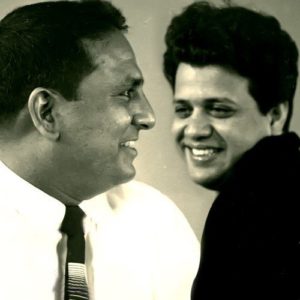 Shankar Jaikishan were the best and my most favourite music-duo on several scales such as popularity, the number of Filmfare Awards that they bagged and were nominated for, and their range of compositions from classical music based, jazz, semi classical, piano based, party songs, sad songs, lively and lilting melodies, comic songs and even some foreign tunes. Let alone mukhadas and antaras of songs of their compositions, they paid particular attention to interludes. It is, therefore, not surprising that in addition to their songs, even their interludes became memorable. They hardly ever used the same interlude twice in a song. One of my favourites, when it comes to interludes, is the interlude after the mukhada in the Anaadi song: Tera jaana. Of course, Tera jaana is a piano based, Raaga based (Raag Bhairavi, Tal Kaherava) sad song sung by Lata Mangeshkar for Nutan at the time when she is forced to break-up with Raj Kapoor, her only love, at the behest of her rich father. We must also acknowledge the genius of the arranger Sebastian D’Souza in making this interlude memorable. Have a look:
Shankar Jaikishan were the best and my most favourite music-duo on several scales such as popularity, the number of Filmfare Awards that they bagged and were nominated for, and their range of compositions from classical music based, jazz, semi classical, piano based, party songs, sad songs, lively and lilting melodies, comic songs and even some foreign tunes. Let alone mukhadas and antaras of songs of their compositions, they paid particular attention to interludes. It is, therefore, not surprising that in addition to their songs, even their interludes became memorable. They hardly ever used the same interlude twice in a song. One of my favourites, when it comes to interludes, is the interlude after the mukhada in the Anaadi song: Tera jaana. Of course, Tera jaana is a piano based, Raaga based (Raag Bhairavi, Tal Kaherava) sad song sung by Lata Mangeshkar for Nutan at the time when she is forced to break-up with Raj Kapoor, her only love, at the behest of her rich father. We must also acknowledge the genius of the arranger Sebastian D’Souza in making this interlude memorable. Have a look:
Did you notice what the interludes do to you? The first one is agitated one; it is as unnerving as it should be for Nutan to say good bye to the love of her life. The interlude is like as if someone is playing like crazy on the chords of her heart. There is a calming effect in the second interlude as if the helplessness of the situation and the acceptance thereof have made her numb and increasingly silent; as if hit by chilling waves. Ladies and gentlemen, now you would understand why I use the word genius whilst describing Shankar Jaikishan to you. As they said in 1962: “We have never thought of the public as the ‘masses’, but as individuals who want the best from us.” Tell me how many others have you come across who would go to this extent to give you a musical experience.
Lets try one more. This is the song Ye raat bheegi bheegi ye mast fizaayen in the movie Chori Chori; sung by Manna Dey for Raj Kapoor and Lata Mangeshkar for Nargis. It is in Raag Kirwani or Keerwani, Tal Kaherava. The scene is about Nargis having run away from her father (shipping tycoon) in Bombay to be with her lover Pran in Bangalore. On the way, she is helped by Raj Kapoor, a small time journalist. As they are on the run together, there is, for the first time, quite a flux of feelings from both the sides since they appear to be heading towards being lovers. In the first interlude the music helps to bring out how she has no control over her emotions; she is merely a doll or a puppet. The second interlude is renumerative because of contemplating whether she has finally found someone who she can call her own (Main dhuund rahi hoon apne ko). And the third interlude has a little sadness laced with what-if feelings by both.
https://www.youtube.com/watch?v=f1DZxkiMjRo
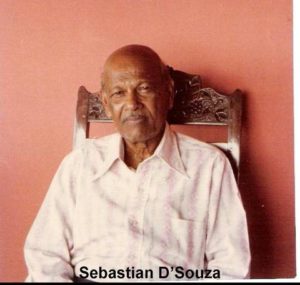
Truly, in both the songs that I have given above, Shankar Jaikishan helped by their arranger Sebastian D’Souza find a perfect match between music, notes, compositions, interludes, voice and emotions. These are just examples of the extent to which they used to go in making songs.
Now why did I labour to give you so much about interludes when generally I have been focusing on the raaga, the tal and the lyrics only? It is because you would enjoy the song that I have chosen for you more if you pay attaention to the interludes too. Let me at the outset itself tell you that in Bedardi baalma, the first and the third interludes are repeated. It is rare for Shankar Jaikishan to do so. The complete lyrics of the song are about comparing her (Sadhana‘s) situation now that she is alone and melancholic with the happy past when in the same Srinagar valley, he (Rajendra Kumar) was there with her in loving and romantic togetherness. The first and last interlude both bring out that intense feeling of longing for him when she can’t find him. The second interlude is about her current situation of extreme melancholy with matching lyrics. Shankar Jaikishan were really masters of this art. I am sure many of us remember the first and the last interludes and these help us to feel for her whilst she lays bare her desapondency.
We have completed eighty-six days of Raaga Based Songs of the Day. Our first post in the series was titled ‘Raaga Based Song Of The Day #1’ and the song was a Mohammad Rafi and Lata Mangeshkar song from the 1970 Shakti Samanta movie Pagla Kahin Ka: Tum mujhe youn bhula na paoge. It is in Raag Jhinjhoti, Tal Kaherava.
Our eighty-sixth post or the last post was titled ‘Raaga Based Song Of The Day #86‘ and the song was a Chhaya Ganguly song from the 1978 Muzaffar Ali movie Gaman starring Smita Patil and Farooq Sheikh: Aapki yaad aati rahi raat bhar; a ghazal penned by Makhdoom Moihuddin. It is in Raag Bhairavi, Tal Hinch.
This blog has a number of posts on Raaga based songs in Hindi movies titled similarly; for example: ‘The Best Raaga Based Songs in Hindi Movies – Raaga Todi‘.
In the last eighty-six days of sharing Raaga based songs of the day, I have given you songs based on Raag Jhinjhoti, Gara, Bhimpalasi, Madhuvanti, Shivaranjani, Bihag, Pahadi, Sarang, Pilu, Bhairavi, Khammaj, Charukesi, Kalyan or Yaman, Desh, Malgunji, Kirwani, Kedar, Bageshri, Megh Malhar, Bhupali, Ahir Bhairav, Malkaush, Mand, Adana, Kafi, Rageshri, Jaunpuri, Tilang, Janasammohini, Chayanat, Shuddha Kalyan, Gaur Sarang, Jogiya, Asavari, Maru Bihag, Durga, Lalit, Puria Dhanashri, Bhinna Sahdja, Sohani, Multani, Patdeep, Jaijaiwanti, Tilak Kamod, Hemant, Basant Mukhari, Gujri Todi, Kalavati, Hamir, Bhatiyar, Gawati, Shyam Kalyan, Gorakh Kalyan, Madhamat Sarang, Manj Khammaj, Darbari Kanada, Vibhas, Shankara, Bahar, Nand and Mian Ki Malhar; making it a total of 61 raagas. The raagas that have been repeated so far are Pahadi, the raaga of my home place in the Himalayas, Maru Bihag, Raag Kirwani, Jhinjhoti, Bhairavi, Gara, Basant Mukhari, Malkauns, Bhairavi, Mand and Sohani. Today, I am repeating Raag Charukesi.
Today’s song has been sung by Lata Mangeshkar on the lyrics of Hasrat Jaipuri and composition by Shankar Jaikishan. As I said, it is in Raag Charukesi, Tal Dadra. The song is picturised on Sadhana in the 1965 Ramanand Sagar movie Arzoo, in his own production.
We have already covered Shankar Jaikishan above.
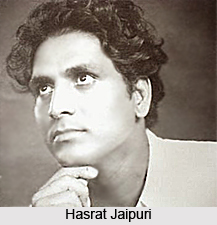 Let me, therefore, come to Hasrat Jaipuri. Shailendra and Hasrat Jaipuri formed a team with Shankar Jaikishan. It was the most abiding team of Lyricists with Composer in Hindi movies. Although, Hasrat was a find of Prithviraj Kapoor who introduced him to his son Raj Kapoor, both the Filmfare Awards that he received were both non-Raj Kapoor movies: Andaz starring Rajesh Khanna and Shammi Kapoor and Suraj starring Rajendra Kumar. Hasrat Jaipuri was born as Iqbal Hussain in Jaipur, Rajashtan, on 15 Apr 1922. His schooling was entirely in English language and it is only later that he learnt Urdu and Persian. He came to Bombay at the age of 18 years and worked as a bus-conductor, similar to Johnny Walker. His first song was Jiya beqraar hai for the 1949 Raj Kapoor movie Barsaat, the debut film of Shankar Jaikishan.
Let me, therefore, come to Hasrat Jaipuri. Shailendra and Hasrat Jaipuri formed a team with Shankar Jaikishan. It was the most abiding team of Lyricists with Composer in Hindi movies. Although, Hasrat was a find of Prithviraj Kapoor who introduced him to his son Raj Kapoor, both the Filmfare Awards that he received were both non-Raj Kapoor movies: Andaz starring Rajesh Khanna and Shammi Kapoor and Suraj starring Rajendra Kumar. Hasrat Jaipuri was born as Iqbal Hussain in Jaipur, Rajashtan, on 15 Apr 1922. His schooling was entirely in English language and it is only later that he learnt Urdu and Persian. He came to Bombay at the age of 18 years and worked as a bus-conductor, similar to Johnny Walker. His first song was Jiya beqraar hai for the 1949 Raj Kapoor movie Barsaat, the debut film of Shankar Jaikishan.
Before penning lyrics for the songs, he was fond of poetry. Some of his poetry was written for his beloved in Jaipur: Radha including the famous song: Yeh mera prem patr padh kar ke tum naraaz na hona.
As far as my favourite songs of Hasrat Jaipuri are concerned, let me tell you first that what I regard as Lata Mangeshkar’s best song ever: Rasik balmaa, has been penned by him (Please see: ‘My Favourite Songs Of Lata Mangeshkar‘). Some of the others are: Aa neele gagan tale (Badshah, 1954), the title song of my Facebook group Yaad Kiya Dil Ne (Patita, 1953), Aansu bhari hain ye jeevan ki raahen (Parvarish, 1958), Aaye bahaar ban ke lubha kar chale gaye (Rajhath, 1956), Awaaz de ke hamen na bulao (Professor, 1962), Ajahu na aaye baalma (Saanjh Aur Savera, 1964), Aji rooth kar ab kahan jaayiga, Chhalke teri aankho se (Arzoo, 1965), Rukh se zara naqaab utha do mere huzoor, Gam uthhane ke liye main to jiye jaayunga, Jhanak jhanak tori naaje payaliya, Jo guzr rahi hai mujhape use kaise main batayun, Kyaa kyaa na sahe hamne sitam aap ki khaatir (Mere Huzoor, 1968), Bat itani si hai kah do koi deevano se, Gori chalo na hans ki chaal (Beti Bete, 1964), Bahaaro phool barsaao (Suraj, 1966), Bhanvre ki gunjan hai mera dil (Kal, Aaj Aur Kal, 1971), Chale jaana zara thehro (Around The World, 1967), Chhod gaye baalam mujhe haay akela chhod gaye, Jiya beqraar hai chhayi bahaar hai, Meri aankhon mein bas gaya koi re (Barsaat, 1949), Dekho ruutha na karo, Tere ghar ke saamne ik ghar banayunga, Tu kahan ye bata is nasheeli raat mein (Tere Ghar Ke Saamne, 1963), Dheere dheere chal chand gagan mein (Love Marriage, 1959), Dil ek mandir hai, Ham tere pyaar mein saara aalam, Yahan koi nahin tera mere siva (Dil Ek Mandir, 1963), Dil ke jharokhe mein tujhako bithakar (Brahmachari, 1968), Mere yaar shab-ba-khair, Ehsaan tera hoga mujhpar, Jaa jaa jaa mere bachpan (Junglee, 1961), Duniya waalon se duur, Jhuumata mausam mast maheena, Tera jalwa jisne dekha (Ujaala, 1959), Ehsaan mere dil pe tumhaara hai dosto (Gaban, 1966), Falsafa pyaar ka tum kyaa jaano (Duniya, 1968), Gumnaam hai koi, Is duniya mein jeena hai to sun lo meri baat, Jaago sone waalo. Jaan-e-chaman shola badan pehlu mein aa jaao (Gumnaam, 1965), Ho maine pyaar kiya hai hai kya zurm kiya (Jis Desh Mein Ganga Behati Hai, 1960), Ibtidaa-e-ishq mein ham saari raat jaage (Hariyali Aur Raasta (1962), Ichak daana bichak daana (Shri 420, 1955), Ik bewafa se pyaar kiya, Jabase balam ghar aaye (Awaara, 1951), Ik but banayunga tera, Tera mera pyaar amar, Tujhe jeevan ki dore se baandh liya hai (Asli Naqli, 1962), Is rang badalati duniya mein (Rajkumar, 1964), Jaane kahan gaye woh din (Mera Naam Joker, 1970), Le gayi dil gudiya Japan ki, Koi matwaala aaya mere dwaare, Sayonara waada nibhayungi (Love In Tokyo, 1966), Janam janam ka saath hai nibhane ko (Tumase Achha Kaun Hai, 1969), Jiya o, jiya o jiya luchh bol do (Jab Pyaar Kisi Se Hota Hai, 1961), Kaun hai jo sapano mein aaya (Jhuk Gaya Asmaan, 1968), Kuchh sher sunaata hoon main (Ek Dil Sau Afsaane, 1963), Manzil wohi hai pyaar ke raahi badal gaye (Kathputli, 1957), Maare gaye gulfaam (Teesri Kasam, 1966), Main Ka karun Raam mujhe buddha mil gaya, O mehbooba tere dil ke paas hi hai (Sangam, 1964), Main kahin kavi na ban jaayun (Pyaar Hi Pyaar, 1968), Main piya teri tu maane ya na maane (Basant Bahar, 1956), Mere mehboob tere dam se hai duniya mein bahar (Bhai Bhai, 1970), Meri zindagi mein aate to kuchh aur baat hoti (Kanyadaan, 1968), Mujhako apne gale lagalo ai mere humraahi, Vo chale haan vo chale, Ye aansu mere dil ki zubaan hain (Hamrahi, 1963), Nain se nain naahi milao (Jhanak Jhanak Payal Baje, 1955), Pankh hote to udh aati re, Taqdeer ka fasaana jaakar kise sunaayen (Sehra, 1963), Hai na bolo bolo (Andaaz, 1968), Parde mein rehane do (Shikar, 1968), Pyar aankhon se jataya to bura maan gaye, Tumhe aur kyaa doon main dil ke siva (Aayi Milan Ki Bela, 1964), Rungoli sajaao (Rungoli, 1962), Sau saal pehle mujhe tumase pyar tha, Teri zulfon se judaayi to nahin maangi thi (Jab Pyar Kisi Se Hota Hai (1961), Sunate the naam ham jinaka bahar se (Aah, 1953), Suno chhoti si gudiya ki lambi kahani (Seema, 1955), Tere khayalon mein ham (Geet Gaya Pathron Ne, 1964), Teri pyari pyari surat ko (Sasural, 1961), Tujhe pyar karte hain karte rahenge (April Fool, 1964), Tuu mere saamne hai teri zulfen hain khuli (Suhaagan, 1964), Unake khayal aaye to aate chale gaye (Laal Patthar, 1971), Ye kya kar daal tune dil tera ho gaya (Howrah Bridge, 1958), and Ye raat bheegi bheegi (Chori Chori, 1956).
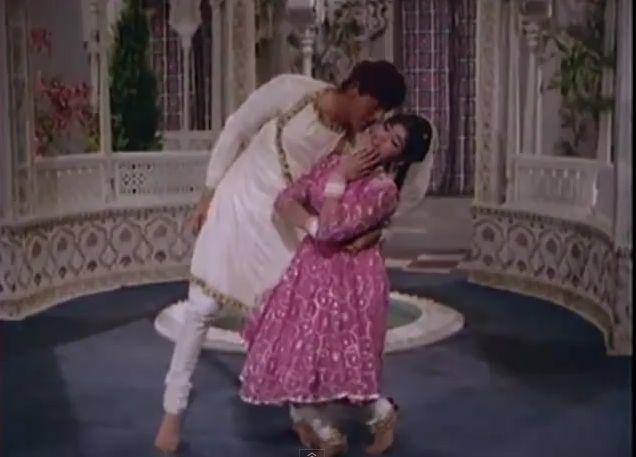
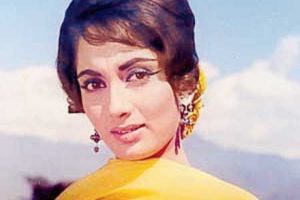 A word about the actress, Sadhana, on whom the song is picturised. As I have said many times earlier, some of Lata Mangeshkar’s best songs are picturised on her. These include: Aaja aayi bahar (Rajkumar, 1964), Aa jaan-e-jaan aa mera ye husn jawan, Geet tere saaz ka, Kaise rahun chup ke maine pi hi kya hai (Inteqaam, 1969), Aap youn hi agar hamase milate rahe (Ek Musafir Ek Haseena, 1962), Aji rooth kar ab kahan jayiyega (Arzoo, 1965), Ham
A word about the actress, Sadhana, on whom the song is picturised. As I have said many times earlier, some of Lata Mangeshkar’s best songs are picturised on her. These include: Aaja aayi bahar (Rajkumar, 1964), Aa jaan-e-jaan aa mera ye husn jawan, Geet tere saaz ka, Kaise rahun chup ke maine pi hi kya hai (Inteqaam, 1969), Aap youn hi agar hamase milate rahe (Ek Musafir Ek Haseena, 1962), Aji rooth kar ab kahan jayiyega (Arzoo, 1965), Ham
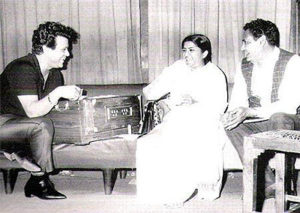
jab simat ke aap ki baahon mein aa gaye, Kaun aaya ke nigahon mein chamak jaag uthi (Waqt, 1965), Jo hamane daastan apni sunayi, Lag jaa gale ke phir ye haseen raat, Naina barse rimjhim rimjhim (Woh Kaun Thi, 1964), Mere mehboob tujhe meri mohabbat ki kasam (Mere Mehboob, 1963), Mila hai kisi ka jhumka, O sajana barkha bahaar aayi (Parakh, 1960), Nainon mein badra chhaye, Tu jahan jahan chalega (Mera Saya, 1966), Tera mera pyar amar, and Tujhe jeevan ki dore se baandh liya hai (Asli Naqli, 1962).
Before we actually take up the song, first, lets take up the value added learning of today. From the last six times we started learning about some of the leading personalities in Indian Classical Music or Shastriya Sangeet. The first one that we took up was Ustaad Asad Ali Khan, the finest Rudra Veena player in the country. Then we took up Pandit Hari Parsad Chaurasia, the greatest Bansuri player in the country. Then we talked about Ali Akbar Khan, the greatest Sarod player in the country. Then we took up Pandit Ravi Shankar, the greatest Sitar player in the world. Then we took up the greatest classical singer in the country (of Carnatic tradition): MS Subbulakshmi. Finally, we shall take up the greatest classical singer in the country (of Hindustani tradition): Pandit Bhimsen Joshi. Today, lets learn a little more about the Shehnai maestro Ustad Bismillah Khan.
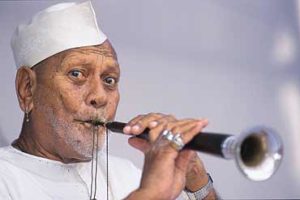 The name Bismillah Khan and Shehnai have become synonymous. Single handedly he elevated this simplest of instruments from just being played on weddings to the classical music heights. He was born Qamaruddin Khan on Mar 1913 in Damraon, Bihar. So strong was his passion that he was the third awardee of the highest civilian honour in India: the Bharat Ratna; the third personality to be given the honour after MS Subbulaxmi and Pandit Ravi Shankar. Between 1961 and 1980, the government of India also conferred on him the next three civilain honours: Padma Vibushan (1980), Padma Bhushan (1968) and Padma Shri (1961). And to think that he overcame his religion (Shia) considering music as haraam. When he died on 21 Aug 2006, his Shehnai was buried with him since he used to call it his begum. He was invited by the Indian PM Pandit Jawahar Lal Nehru to play his Shehnai at the Red Fort in 1947, on the eve of India’s independence. Since then, for a number of years, the tradition of Bismillah Khan’s Shehnai Waadan, after PM’s speech on Independence Day continued. Khan had a brief association with movies. He played the shehnai for super star Dr.Rajkumar’s role of Appanna in the Kannada movie Sanaadi Appanna which became a blockbuster. He acted in Jalsaghar, a movie by Satyajit Ray and provided sound of shehnai in Goonj Uthi Shehnai (1959).
The name Bismillah Khan and Shehnai have become synonymous. Single handedly he elevated this simplest of instruments from just being played on weddings to the classical music heights. He was born Qamaruddin Khan on Mar 1913 in Damraon, Bihar. So strong was his passion that he was the third awardee of the highest civilian honour in India: the Bharat Ratna; the third personality to be given the honour after MS Subbulaxmi and Pandit Ravi Shankar. Between 1961 and 1980, the government of India also conferred on him the next three civilain honours: Padma Vibushan (1980), Padma Bhushan (1968) and Padma Shri (1961). And to think that he overcame his religion (Shia) considering music as haraam. When he died on 21 Aug 2006, his Shehnai was buried with him since he used to call it his begum. He was invited by the Indian PM Pandit Jawahar Lal Nehru to play his Shehnai at the Red Fort in 1947, on the eve of India’s independence. Since then, for a number of years, the tradition of Bismillah Khan’s Shehnai Waadan, after PM’s speech on Independence Day continued. Khan had a brief association with movies. He played the shehnai for super star Dr.Rajkumar’s role of Appanna in the Kannada movie Sanaadi Appanna which became a blockbuster. He acted in Jalsaghar, a movie by Satyajit Ray and provided sound of shehnai in Goonj Uthi Shehnai (1959).
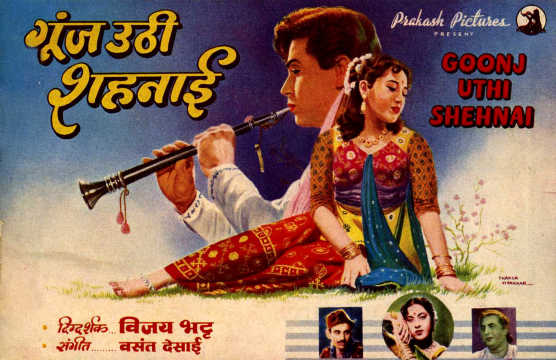
As I said, today’s song is in Raag Charukesi, Tal Dadra.
Charukesi or Charukeshi is a raaga of Carnatic music. The raaga is called Tarangini in Muthuswami Dikshitar school; he was an early 19th century poet and composer.
Charukesi is also very popular in Hindustani music. The Jati of the raaga is Sampurna – Sampurna, that is all seven swar in Aaroha andAvroha. All swar are Shuddha except Dhaivat and Nishad, which are Komal. The samay for the raag is the second prahar of the morning (9AM to Noon). The mood of the raag is pathos (karuna) and devotion. Some of Hindi films most beautiful songs have been composed in it, such as Aaj dil pe koi zor chalta nahin (that was deleted from some versions of the movie Milan), Akele hain chale aao kahan ho, Bedardi balma tujhko mera man yaad karta hai, Bekhudi mein sanam, Chhod de saari duniya kisi ke liye, Ek tu jo mila, Kisi raah pe kisi mod par, Koi jab tumhaara hriday tod de, Shyam teri bansi pukaare Radha naam, Teri umeed tera intezar and karte hain.
About Tal Dadra, I have already told a number of times.
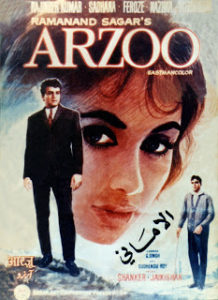 Lastly, a word about the movie from where this song (ghazal) has been taken by me. The 1965 movie Arzoo was produced and directed by Ramanand Sagar and starred Rajendra Kumar, Sadhana and Feroze Khan. The story revolved around Rajendra Kumar (Gopal) and Sadhana (Usha) meeting in Kashmir and falling in love. He has given his name as Sanju. She reveals to him how she hates the physically disabled. Later, he meets with an accident nad becomes disabled and avoids her, knowing her revulsion. His best friend Feroze Khan (Ramesh), not knowing about what has happened between Sanju and Usha, falls in love with Usha and they are about to be married. And then, it is revealed to her that Sanju and Gopal are the same person. The song came about when Sanju distances himself from Usha and she is melancholic about his absence from her life.
Lastly, a word about the movie from where this song (ghazal) has been taken by me. The 1965 movie Arzoo was produced and directed by Ramanand Sagar and starred Rajendra Kumar, Sadhana and Feroze Khan. The story revolved around Rajendra Kumar (Gopal) and Sadhana (Usha) meeting in Kashmir and falling in love. He has given his name as Sanju. She reveals to him how she hates the physically disabled. Later, he meets with an accident nad becomes disabled and avoids her, knowing her revulsion. His best friend Feroze Khan (Ramesh), not knowing about what has happened between Sanju and Usha, falls in love with Usha and they are about to be married. And then, it is revealed to her that Sanju and Gopal are the same person. The song came about when Sanju distances himself from Usha and she is melancholic about his absence from her life.
Please enjoy in Raag Charukesi, Tal Dadra, a superb composition of Shankar Jaikishan on the extraordinary lyrics of Hasrat Jaipuri, a song sung by Lata Mangeshkar: Bedardi baalma tujhako mera man yaad karta hai...
बेदर्दी बालमा तुझको मेरा मन याद करता है
बरसता है जो आँखों से वो सावन याद करता है
कभी हम साथ गुज़रे जिन सजीली रहगुज़ारों से
फ़िज़ा के भेस में गिरते हैं अब पत्ते चनारों से
ये राहें याद करती हैं ये गुलशन याद करता है
कोई झोंका हवा का जब मेरा आँचल उड़ाता है
गुमाँ होता है जैसे तू मेरा दामन हिलाता है
कभी चूमा था जो तूने वो दामन याद करता है
वो ही हैं झील के मंदर वो ही किरनों कि बरसातें
जहाँ हम तुम किया करते थे पहरों प्यार की बातें
तुझे इस झील का ख़ामोश दरपन याद करता है
We have intended to learn about Raaga based music whilst we entertain ourselves with Raaga based songs. So, lets, once again, take stock of our collective learning so far:
- On the first day we learnt about the Raaga system devised by Pandit Vishnu Narayan Bhatkhande, which is the prevalent system in Hindustani Classical Music and based on ten Thaats.
- On the second day we learnt about Tal or Taal.
- On the third day we learnt about characteristics of Raagas that included Swar, Jati, Thaat, Arohana and Avarohana, Vadi, Samvadi and Pakad.
- On the fourth day, we learnt about Sargam.
- On the fifth day, we learnt about notations used in Indian classical music or simply Swar Lipi.
- On the sixth day, we learnt about the Ras (sentiments) that Raagas evoke.
- On the seventh day, we learnt about various types of Swar: Shuddha, Achal, Vikrut, Komal and Teevra.
- On the eighth day, we learnt the parts of a composition in Indian Classical Music.
- On the ninth day, we learnt the names of some of the popular instruments used in Indian Classical Music.
- On the tenth day, we learnt about the sources of names of Raagas.
- On the eleventh day, we learnt about why Bhairavi is the first raag to be taught to beginners and also why it is the last in a performance.
- On the twelfth day, we learnt about Khammaj Thaat.
- On the thirteenth day, we learnt about Tal Punjabi Theka or Sitarkhani.
- On the fourteenth day, we learnt about Alap.
- On the fifteenth day, we learnt about List of Raagas (Raagmala) in my favourite book: Sri Guru Granth Sahib.
- On the sixteenth day, we learnt about tips for raaga identification.
- On the seventeenth day, we learnt the basics of Gharana system.
- On the eighteenth day, we learnt about Filmi Sangeet.
- On the nineteenth day, we learnt about the commonest Tal in Raagas: Tintal.
- On the twentieth day, we learnt about the Kafi Thaat.
- On the twenty-first day, we learnt a little more in detail about the classification of Raagas.
- On the twenty-second day, we learnt the essential differences between Bhairavi and Bhairav.
- On the twenty-third day, we learnt a little more in detail about the Jati or Jaati of a raaga.
- On the twenty-fourth day, we learnt details of Thaat Bilawal, the most basic thaat in the Bhatkhande’s system of raagas.
- On the twenty-fifth day, we learnt about Tintal.
- On the twenty-sixth day, we learnt in detail about the Raaga – Samay linkage.
- On the twenty-seventh day, we learnt about Lehar.
- On the twenty-eighth day, we learnt about the history of the Hindustani Music.
- On the twenty-ninth day, we learnt about Dhrupad.
- On the thirtieth day, we learnt about Rupaktal that I was introduced to, a few months back, by my friend Anand Desai.
- On the thirty-first day, we learnt about Khayal.
- On the thirty-second day, we learnt about Thumri.
- On the thirty-third day, we learnt about Tappa.
- On the thirty-fourth day, we learnt about Tarana.
- On the thirty-fifth day, we learnt about Tal Dipchandi (Moghali).
- On the thirty-sixth day, we learnt about Tabla.
- On the thirty-seventh day, we learnt about Kirtan.
- On the thirty-eighth day, we learnt about Pakhawaj.
- On the thirty-ninth day, we learnt about Hori.
- On the fortieth day, we learnt about Dadra.
- On the forty-first day, we learnt about Kajri.
- On the forty-second day, we learnt about Chaiti.
- On the forty-third day, we learnt about Sarangi.
- On the forty-fourth day, we learnt about Shehnai.
- On the forty-fifth day, we learnt about Sarod.
- On the forty-sixth day, we learnt about Bansuri.
- On the forty-seventh day, we learnt about Ektal and Tanpura.
- On the forty-eighth day, we learnt about Veena.
- On the forty-ninth day, we repeated our learning of Veena with a small excitement added.
- On the fiftieth day, we learnt about Dilruba/Esraj.
- On the fifty-first day, we learnt about Jaltarang.
- On the fifty-second day we learnt about Qawwali.
- On the fifty-third day, we learnt about Sitar.
- On the fifty-fourth day, we learnt about Surbahar.
- On the fifty-fifth day, we learnt about Harmonium.
- On the fifty-sixth day, we learnt about Santoor.
- On the fifty-seventh day, we learnt about Swarmandal.
- On the fifty-eighth day, we learnt about the Shruti Box.
- On the fifty-ninth day, we learnt about Alankar.
- On the sixtieth day, we learnt about singing in Aakaar.
- On the sixty-first day, we learnt about the Classification of Indian Musical Instruments.
- On the sixty-second day, we learnt a little about Carnatic Music.
- On the sixty-third day, we learnt about Natya Shastra.
- On the sixty-fourth day, we learnt about evolution of musical instruments in India down the ages.
- On the sixty-fifth day, we learnt about Riyaaz.
- On the sixty-sixth day, we looked at a list of Raagas in Hindustani Classical Music.
- On the sixty-seventh day, we learnt about the health benefits of raagas.
- On the sixty-eighth day, we learnt a little more comprehensively about the moods and emotions that raagas evoke.
- On the sixty-ninth day, we learnt about a mobile application to help identify raagas.
- On the seventieth day, we learnt about Melakarta Raagas.
- On the seventy-first day, we learnt about Sangita Makarand.
- On the seventy-second day, we learnt about TaalMala an Android application for personalized accompaniment of musical instruments during Riyaaz or even during Concert.
- On the seventy-third day, we learnt about Indian Classical Ragas, an Android application for mobile phones.
- On the seventy-fourth day, we learnt about Saregama Classical, another application for Classical Raagas.
- On the seventy-fifth day, we learnt about a free online service available to learn Indian Classical Music.
- On the seventy-sixth day, we learnt about List of Hindustani Classical Musical Festivals in India and Abroad.
- On the seventy-seventh day, we learnt about List of Carnatic Musical Festivals in India and Abroad.
- On the seventy-eighth day, we learnt about Jhaptal.
- On the seventy-ninth day, we learnt about Ektal.
- On the eightieth day, we learnt about Tivra Tal.
- On the eighty-first day, we learnt about the greatest Rudra Veena player ever: Ustaad Asad Ali Khan.
- On the eighty-second day, we learnt about the greatest Bansuri player alive: Pandit Hariprasad Chaurasia.
- On the eighty-third day, we learnt about the best Sarod player in the country: Ustaad Ali Akbar Khan.
- On the eighty-fourth day, we learnt about the greatest Sitar player in the world: Pandit Ravi Shankar.
- On the eighty-fifth day, we learnt about the greatest Indian vocalist of Carnatic tradition: MS Subbulakshmi.
- On the eighty-sixth day, we not just learnt about the greatest vocalist of Hindustani tradition: Pandit Bhimsen Joshi but also learnt about Tal Hinch.
- And today, on the eighty-seventh day, we learnt about the Shehnai maestro Ustaad Bismillah Khan.
There is much more still to be learnt and enjoyed.
Please stay tuned!
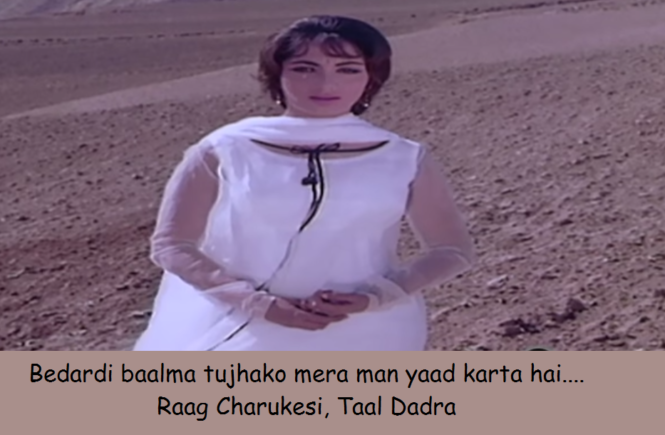
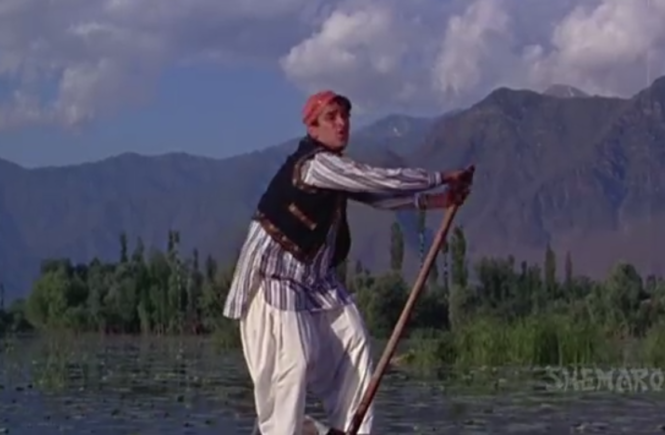
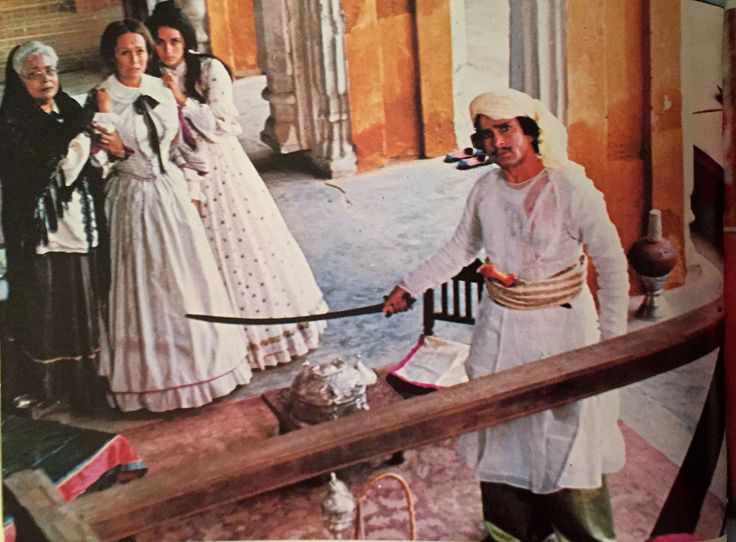
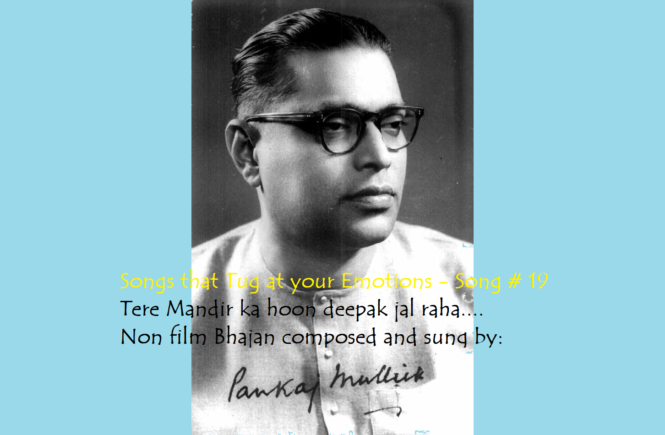
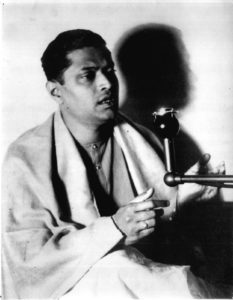 Pankaj Mullick
Pankaj Mullick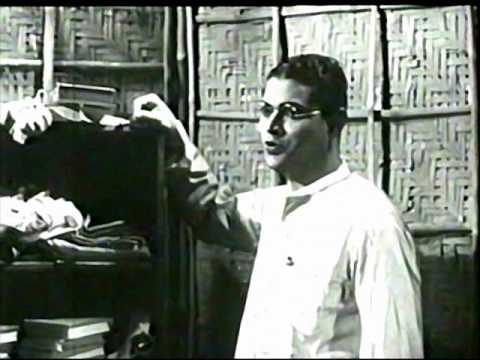
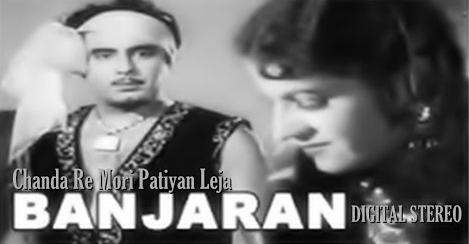
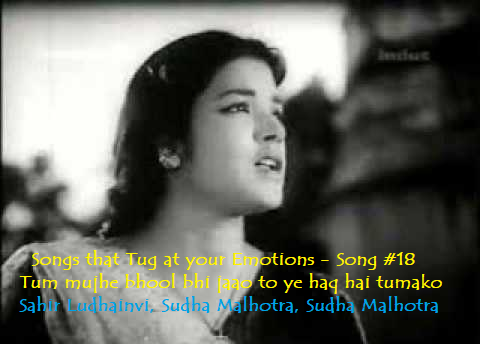
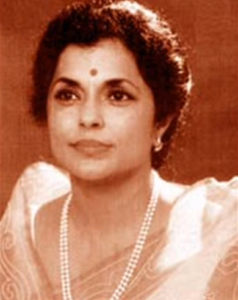
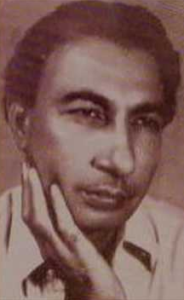 Lets turn to Sahir Ludhianvi, the lyricist of this song. Of course, many of his songs were indicative of the situation between him and
Lets turn to Sahir Ludhianvi, the lyricist of this song. Of course, many of his songs were indicative of the situation between him and 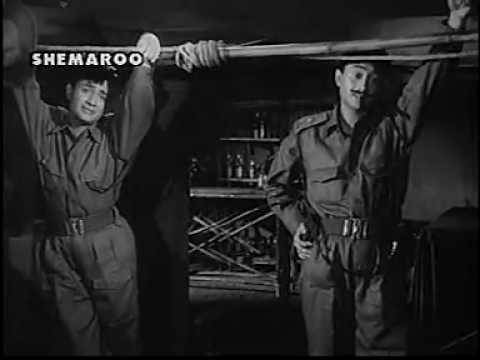
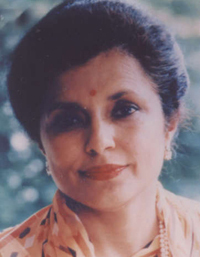 Lets turn to the
Lets turn to the 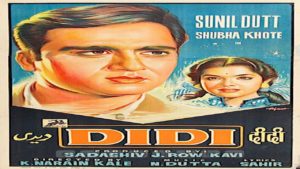 The movie from which the song of this post has been taken is the
The movie from which the song of this post has been taken is the 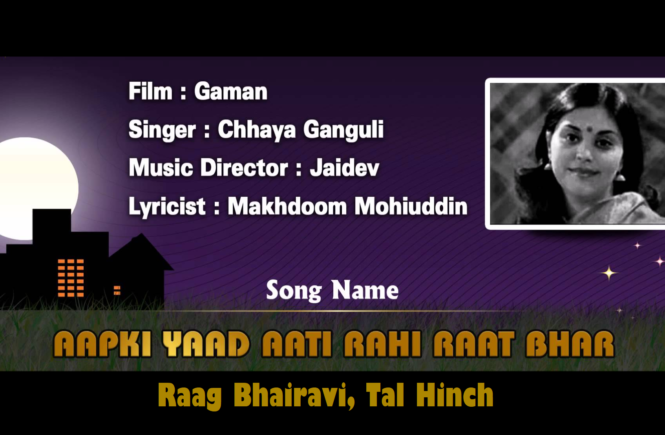
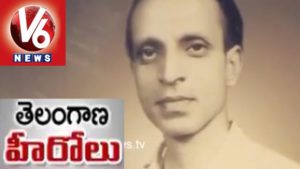 Let me, therefore, start with the poet of this great ghazal. His name was
Let me, therefore, start with the poet of this great ghazal. His name was 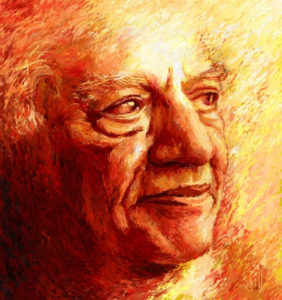 The ghazal, Aap ki yaad aati rahi raat bhar has a history of its own.
The ghazal, Aap ki yaad aati rahi raat bhar has a history of its own. 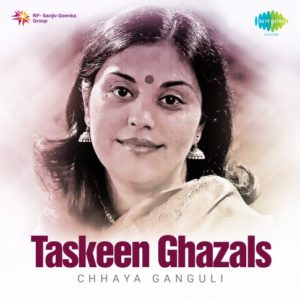
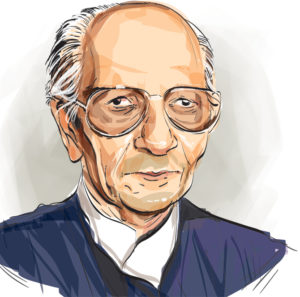 Jaidev Verma
Jaidev Verma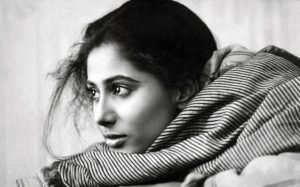
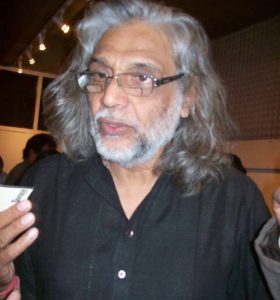
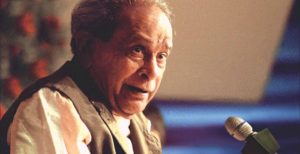
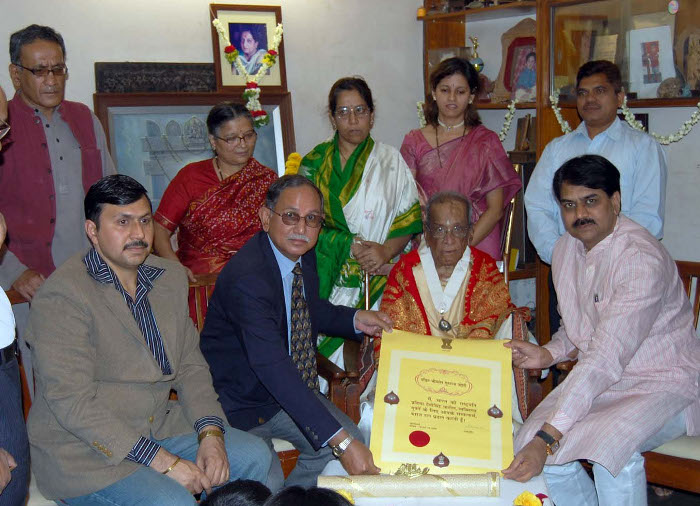
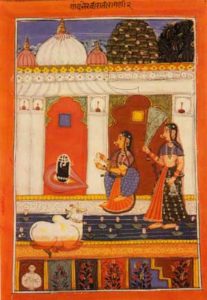
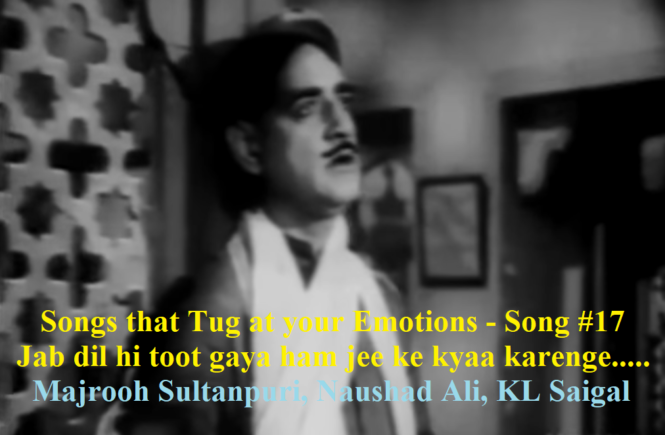
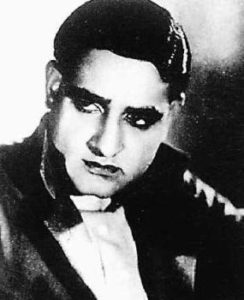 If you ask any person of my era, what is the commonest comment about
If you ask any person of my era, what is the commonest comment about 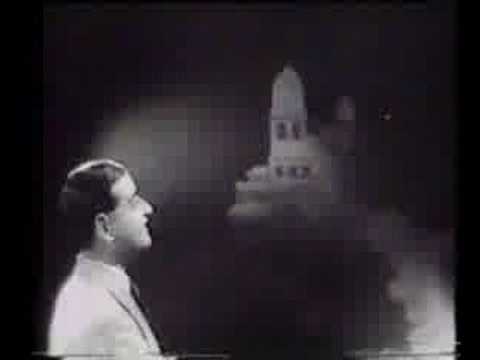
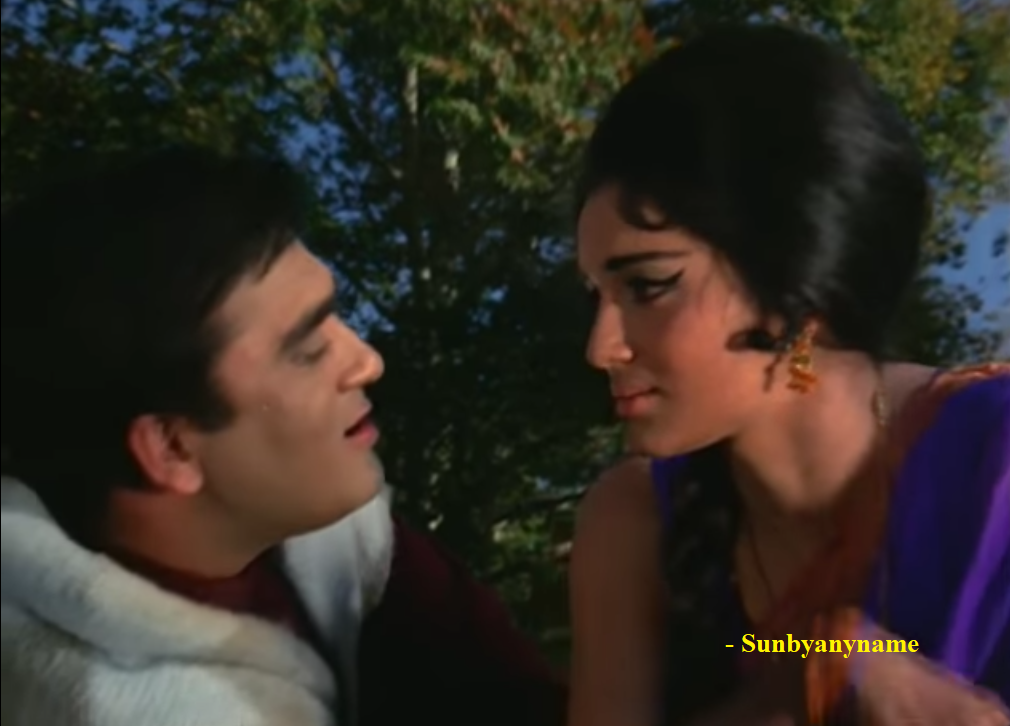
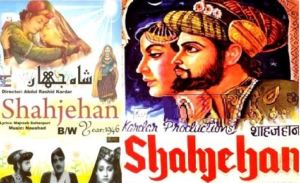 The movie’s story is a fictionalised account of an episode during the reign of Emperor Shajahan: “Circa the Mugal rule in Hindustan, Shahjahan, the present emperor is approached by one of his subjects, whose daughter, Ruhi, is so beautiful, that her suitors have killed her to-be grooms, as well as two of her brothers, who came to her aid. He now seeks the Emperor’s assistance. Appalled at this, the Emperor confers with his Queen, Mumtaz, and upon her advise asks the father to bring his daughter to be a guest of the palace, and it is from here that a suitor will be chosen by none other than his royal majesty himself. The father does as asked, but one of the Queen’s aide is troubled by Ruhi’s august presence, that she fears that the Emperor may take a liking to her, and make her his begum. She plots a devious scheme so that Ruhi is promised to get married to Shiraz. The matter gets quite complicated as Ruhi has already been promised to Sohail. The Emperor and his Queen are so perturbed by this situation, that both become ill. The situation is resolved when Sohail decides to give Ruhi up so that she can marry Shiraz – but not until Mumtaz tragically passes away. Devastated and heart-broken by her death, Shah Jahan feels that she can be made immortal by the building of a royal tomb, and asks Shiraz to come up with such a Mahal. Watch as events begin to unfold, that will finally give rise to one of the seven wonders of the world – The Taj Mahal.”
The movie’s story is a fictionalised account of an episode during the reign of Emperor Shajahan: “Circa the Mugal rule in Hindustan, Shahjahan, the present emperor is approached by one of his subjects, whose daughter, Ruhi, is so beautiful, that her suitors have killed her to-be grooms, as well as two of her brothers, who came to her aid. He now seeks the Emperor’s assistance. Appalled at this, the Emperor confers with his Queen, Mumtaz, and upon her advise asks the father to bring his daughter to be a guest of the palace, and it is from here that a suitor will be chosen by none other than his royal majesty himself. The father does as asked, but one of the Queen’s aide is troubled by Ruhi’s august presence, that she fears that the Emperor may take a liking to her, and make her his begum. She plots a devious scheme so that Ruhi is promised to get married to Shiraz. The matter gets quite complicated as Ruhi has already been promised to Sohail. The Emperor and his Queen are so perturbed by this situation, that both become ill. The situation is resolved when Sohail decides to give Ruhi up so that she can marry Shiraz – but not until Mumtaz tragically passes away. Devastated and heart-broken by her death, Shah Jahan feels that she can be made immortal by the building of a royal tomb, and asks Shiraz to come up with such a Mahal. Watch as events begin to unfold, that will finally give rise to one of the seven wonders of the world – The Taj Mahal.”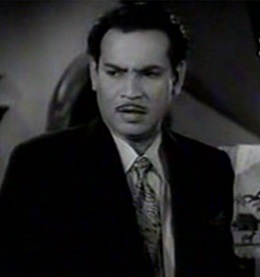
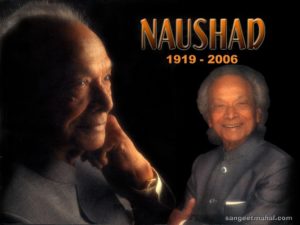 Naushad Ali,
Naushad Ali,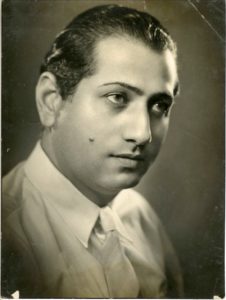
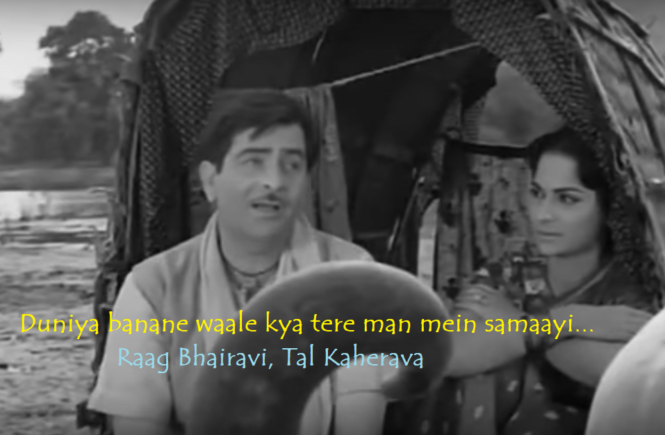
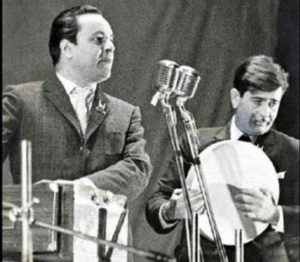
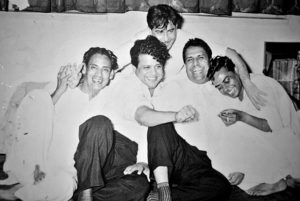
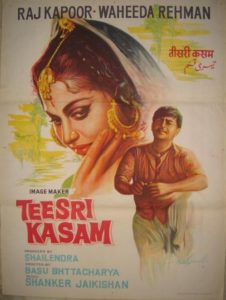 Indeed, this type of deep thinking is true of all songs of the
Indeed, this type of deep thinking is true of all songs of the 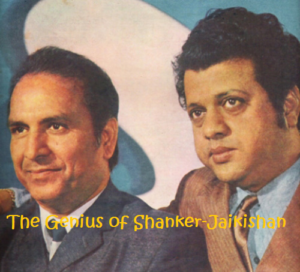
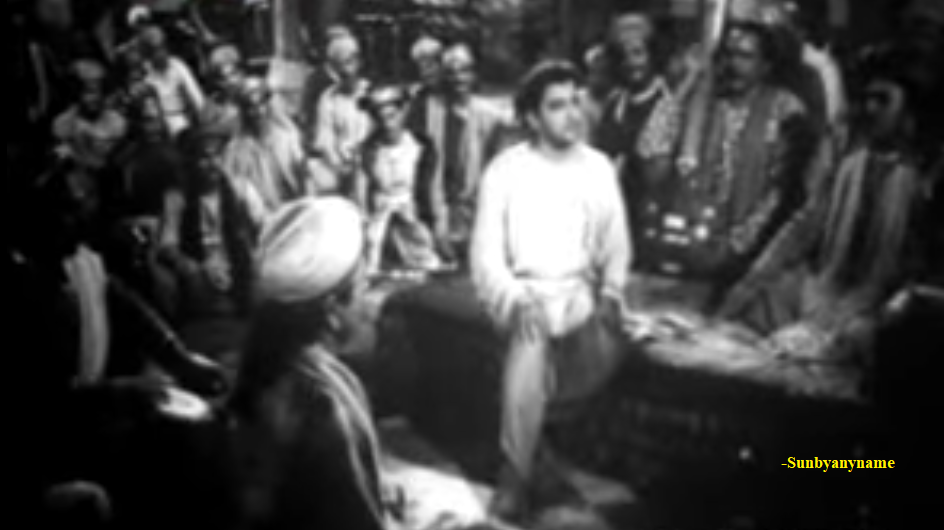
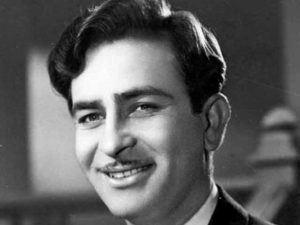
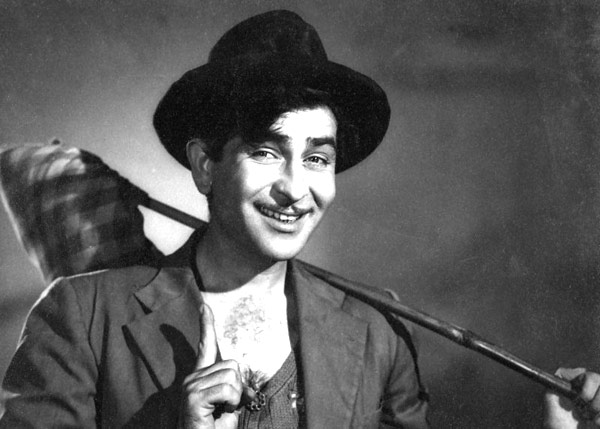
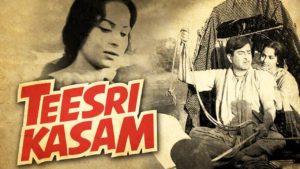 Lets get to the movie:
Lets get to the movie: 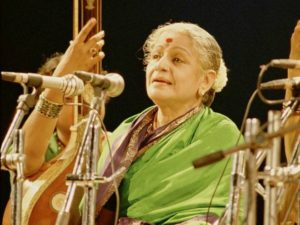
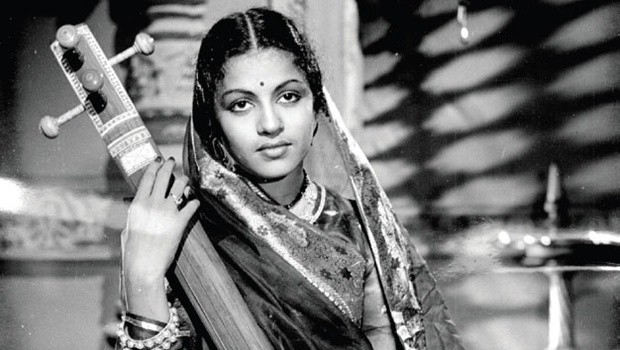
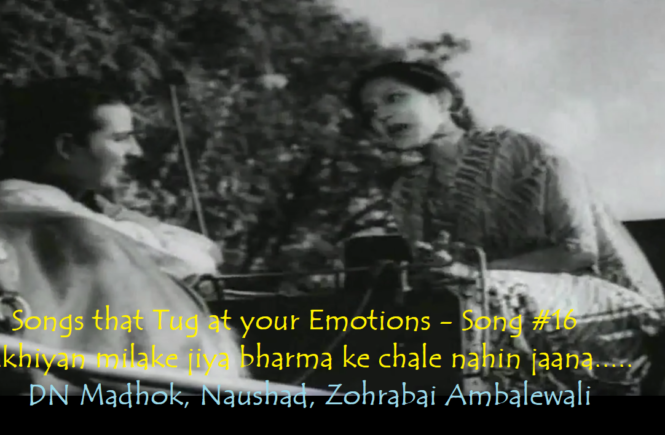
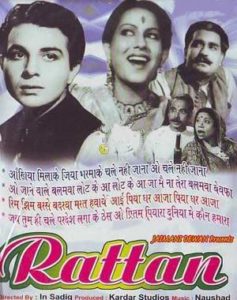
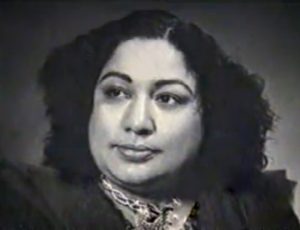
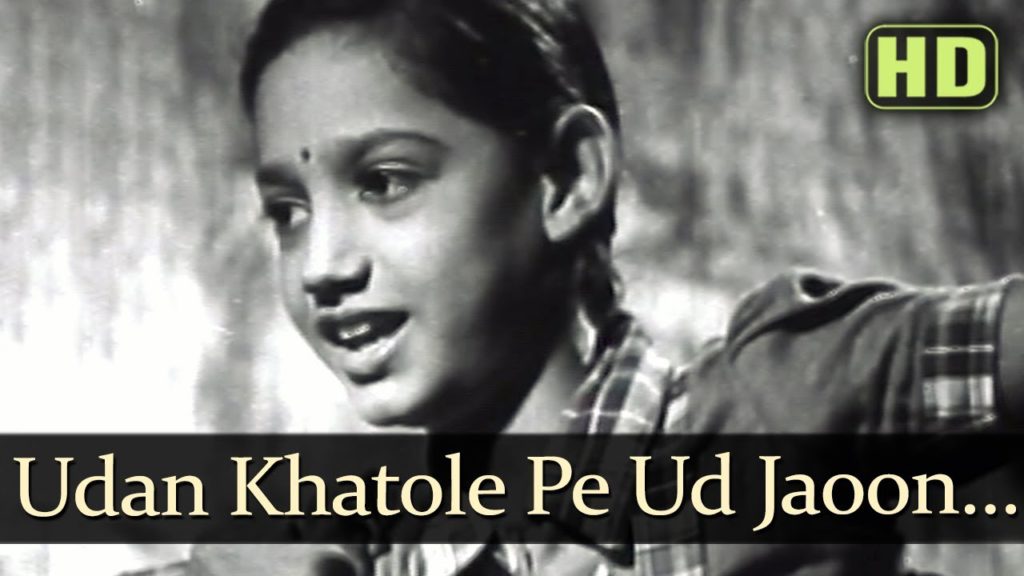
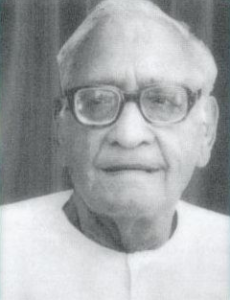 Lets take up the
Lets take up the 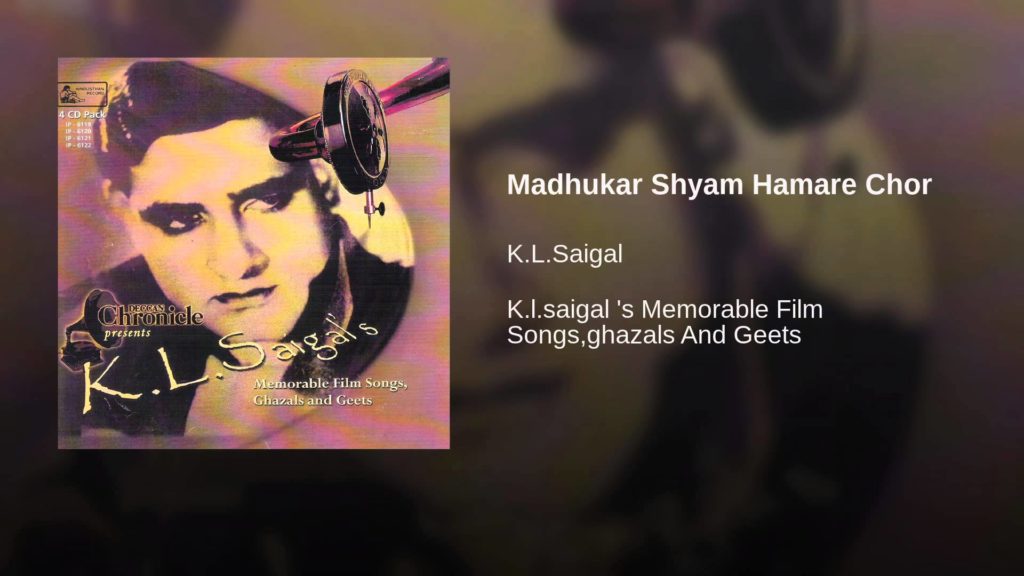
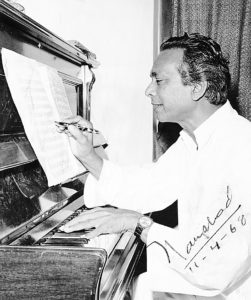

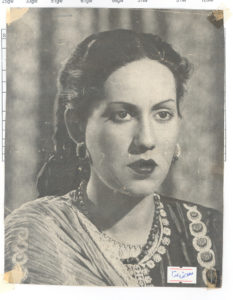
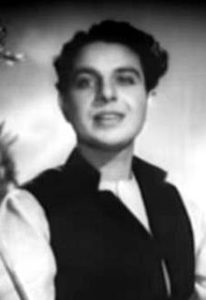 And finally,
And finally, 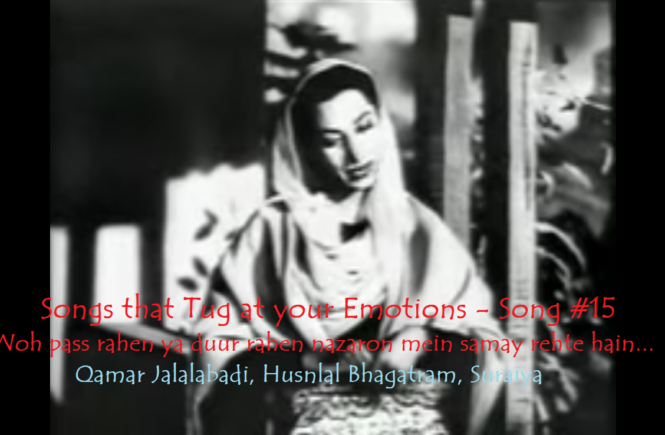
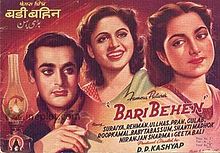
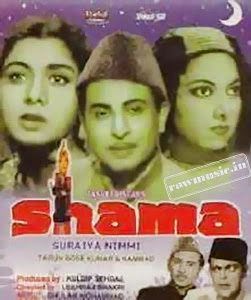 The earlier
The earlier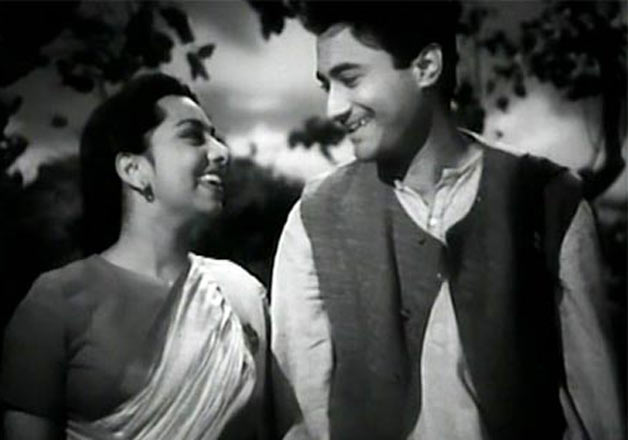
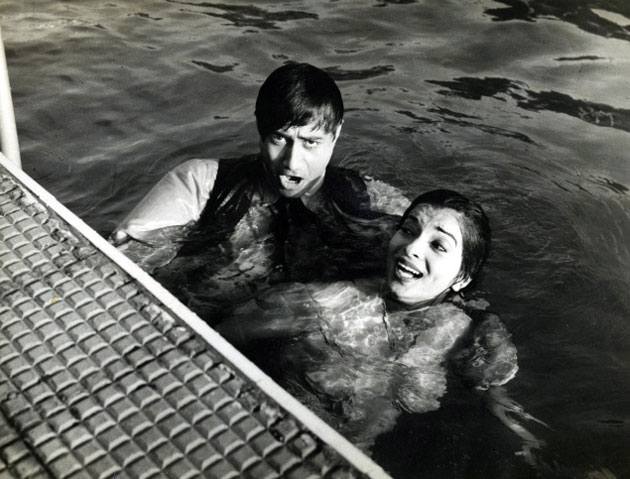
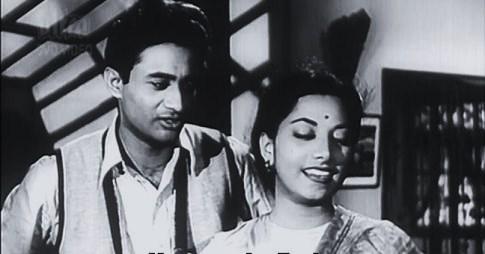
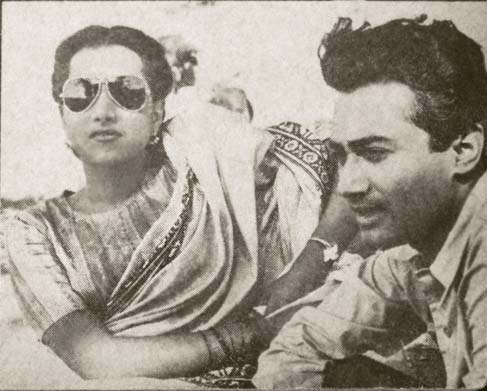
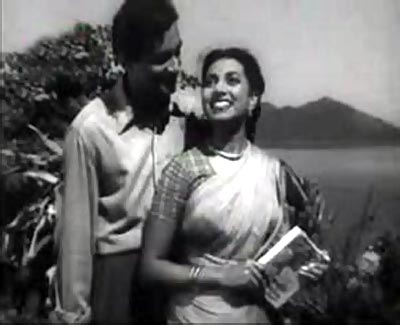
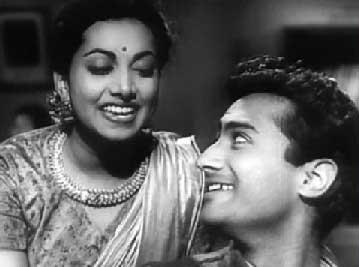
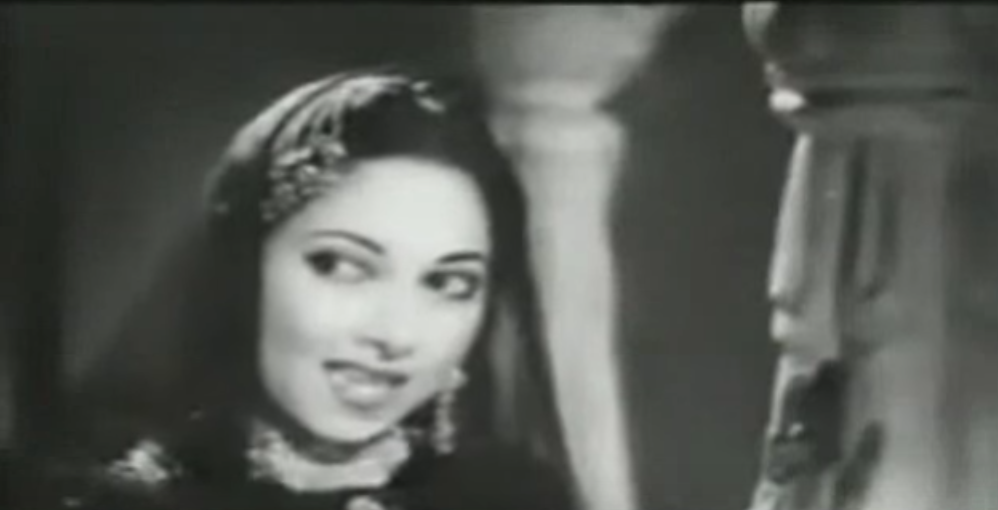
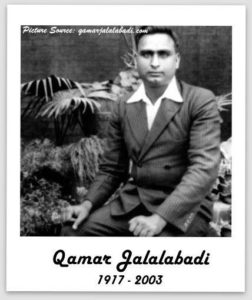 Lets turn to the lyricist
Lets turn to the lyricist 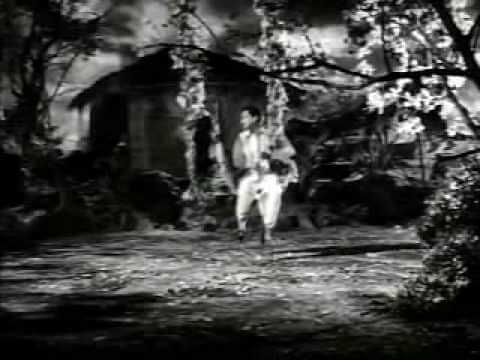
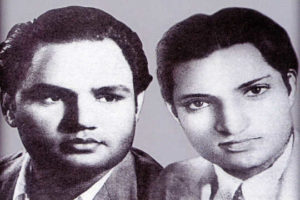
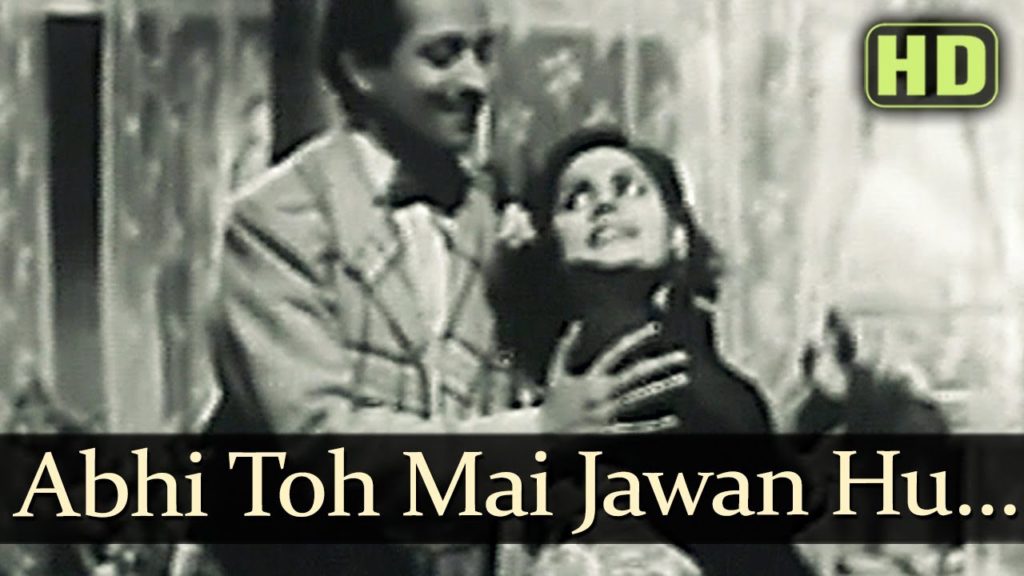
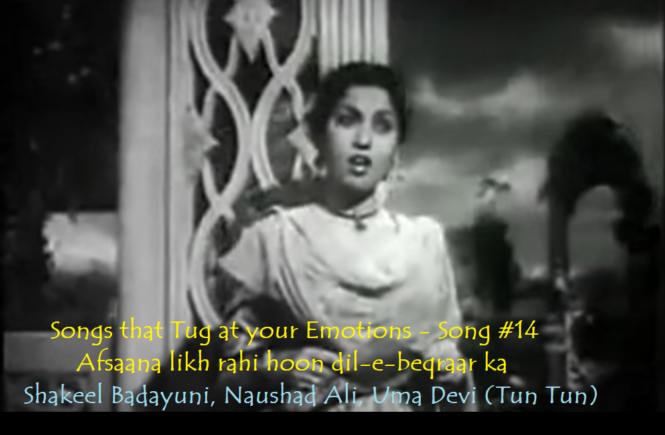
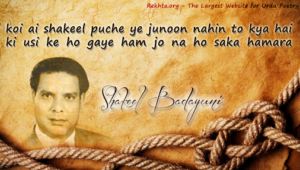 The other contemporary poets and lyricists wrote; but, I feel
The other contemporary poets and lyricists wrote; but, I feel 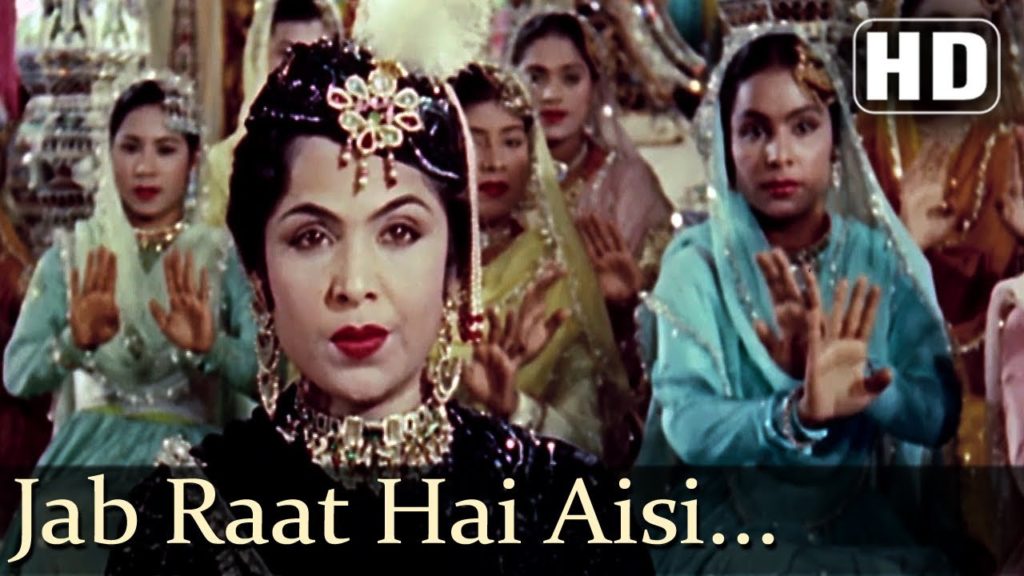
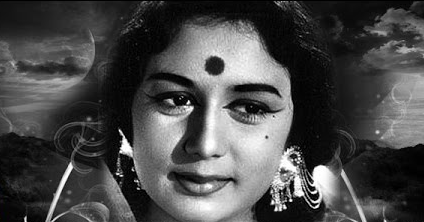
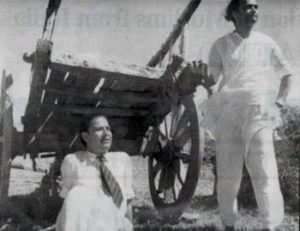
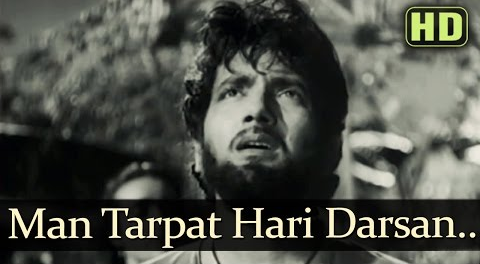
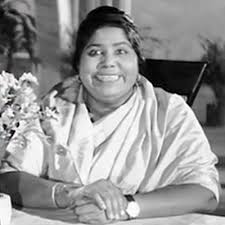 Lets talk a little about the singer
Lets talk a little about the singer 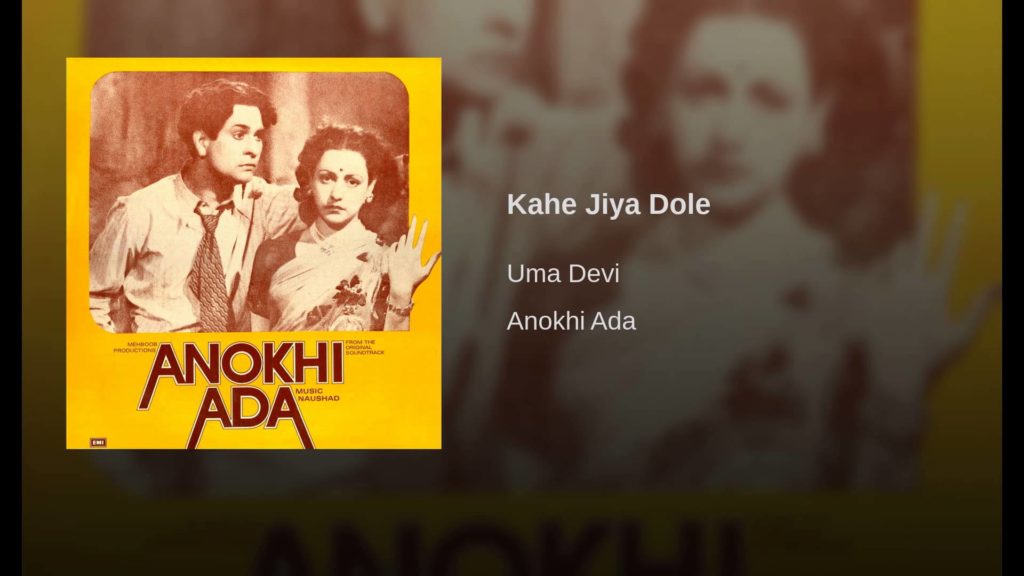
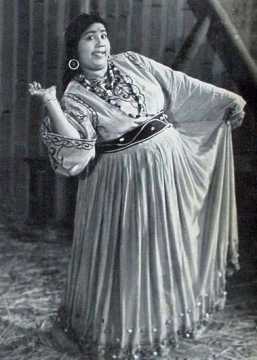
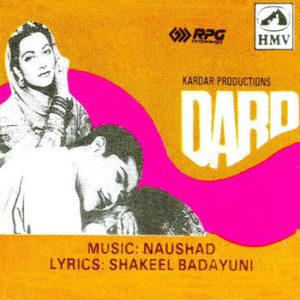 The movie from where I have taken this song is the
The movie from where I have taken this song is the 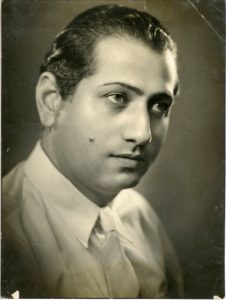
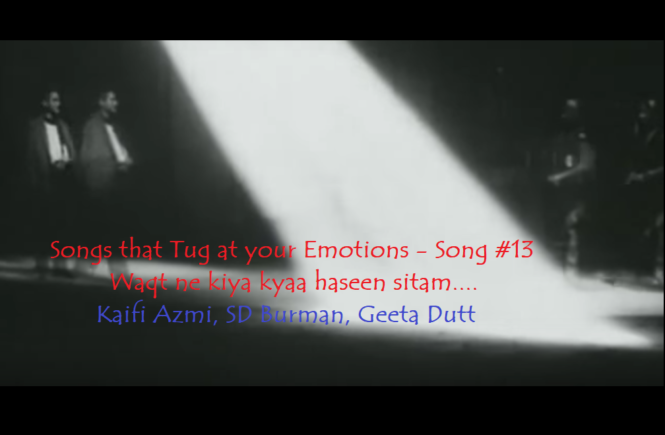
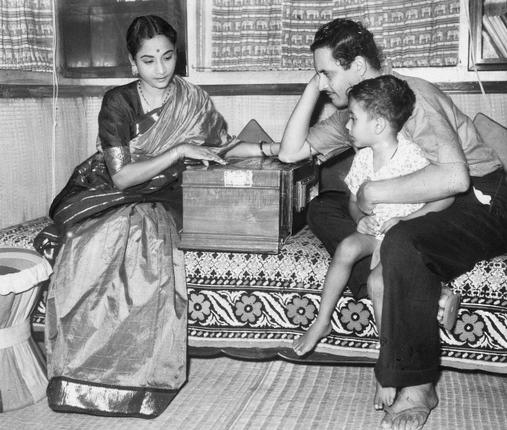
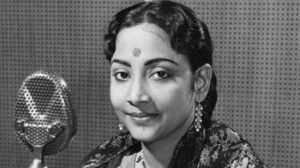
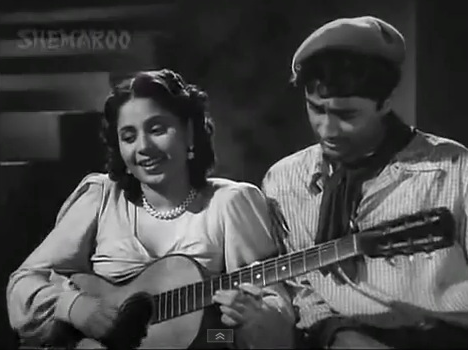
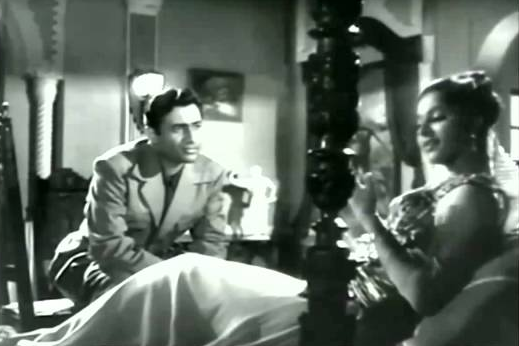
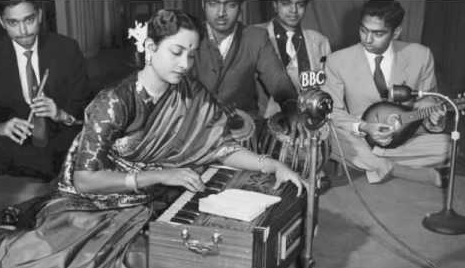
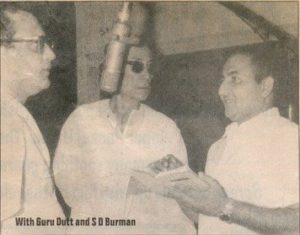 I have already, in my posts, said enough about the composer of this song:
I have already, in my posts, said enough about the composer of this song: 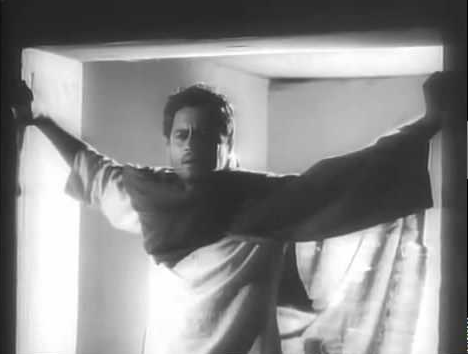
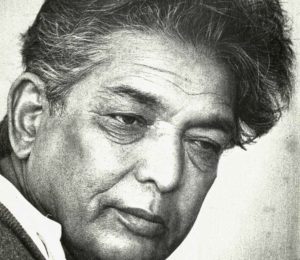 Finally, the lyricist of the song:
Finally, the lyricist of the song: 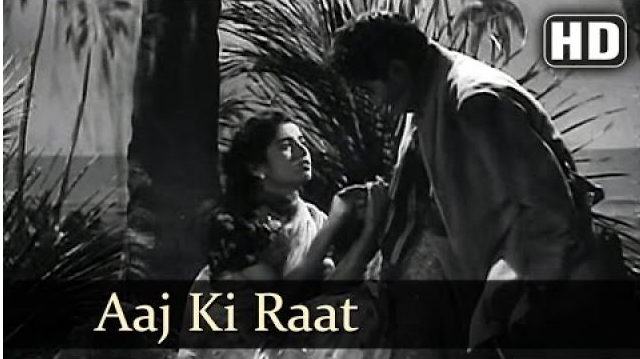
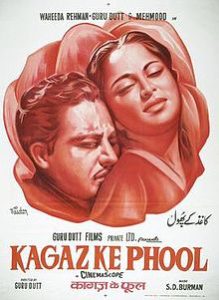
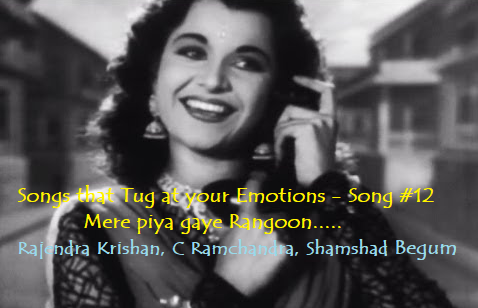
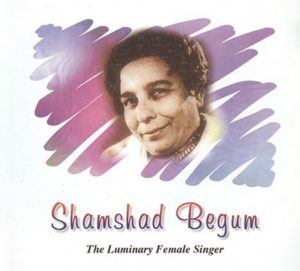
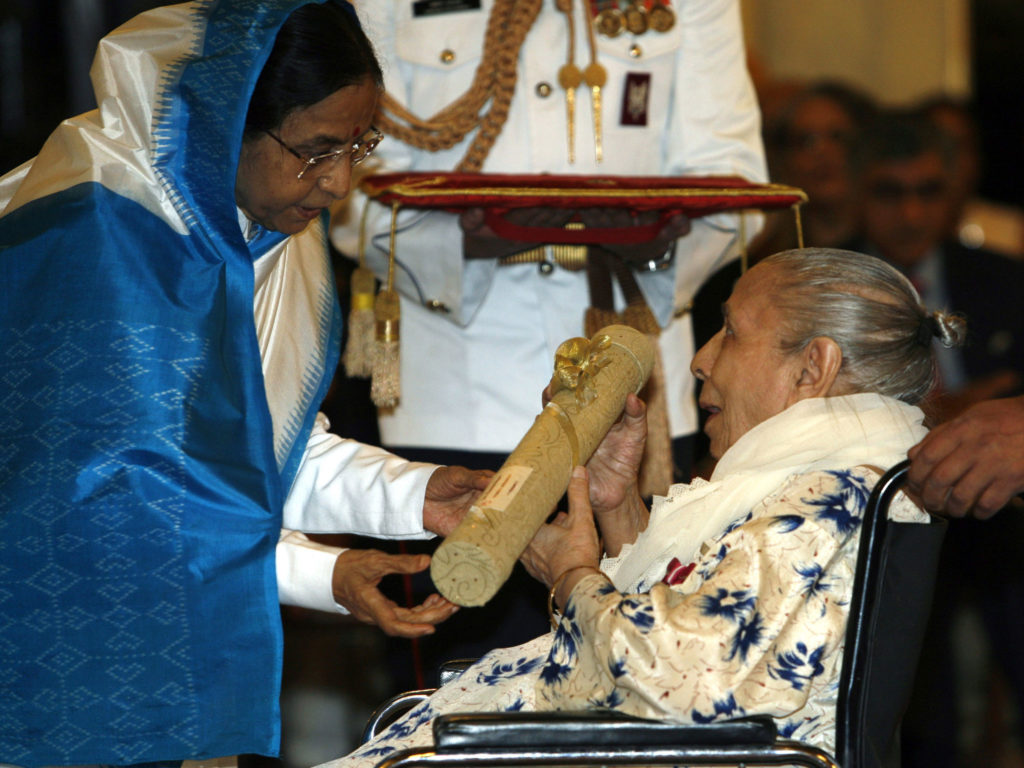
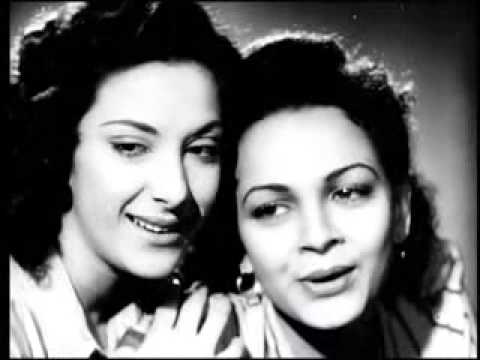
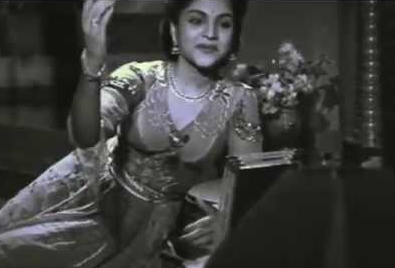
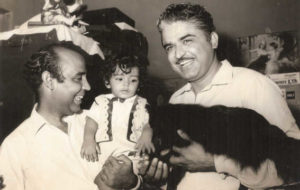
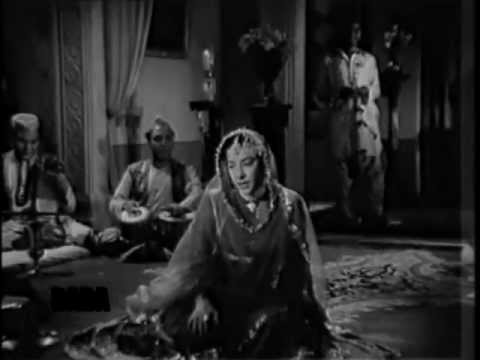
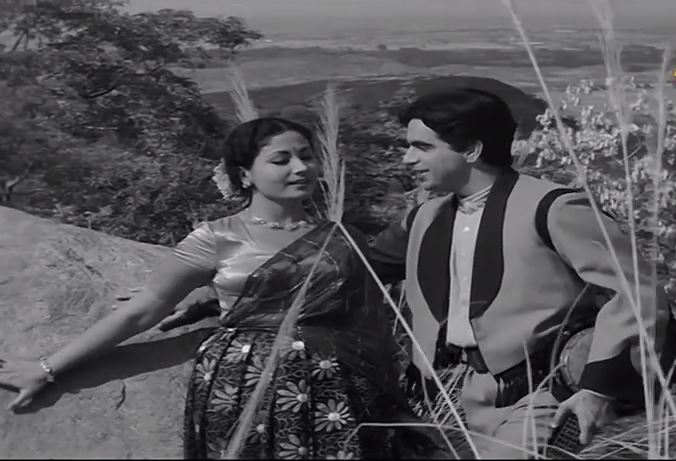
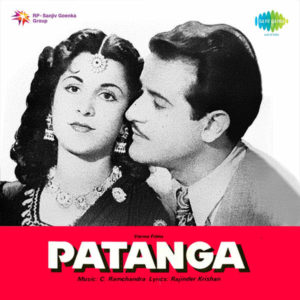 As I said, today’s song is from the 1949 Harnam Singh Rawail movie Patanga starring Nigar Sultana, Shyam, Yakub and Gope. The song is picturised on Nigar Sultana and Gope, sung by Shamshad Begum, on the lyrics of Rajendra Krishan and composition by C Ramchandra.
As I said, today’s song is from the 1949 Harnam Singh Rawail movie Patanga starring Nigar Sultana, Shyam, Yakub and Gope. The song is picturised on Nigar Sultana and Gope, sung by Shamshad Begum, on the lyrics of Rajendra Krishan and composition by C Ramchandra.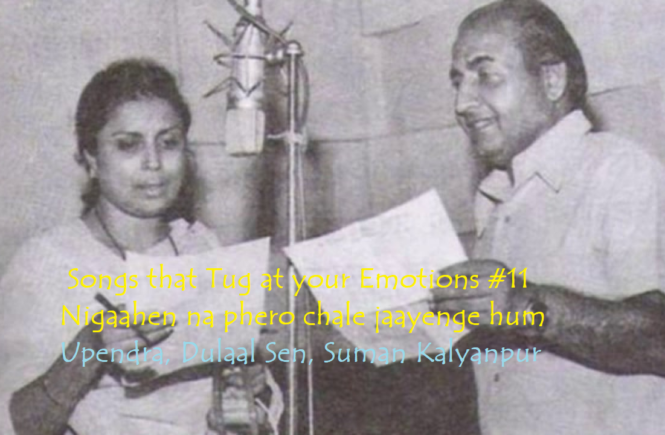
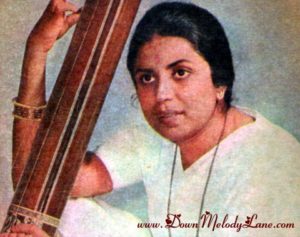
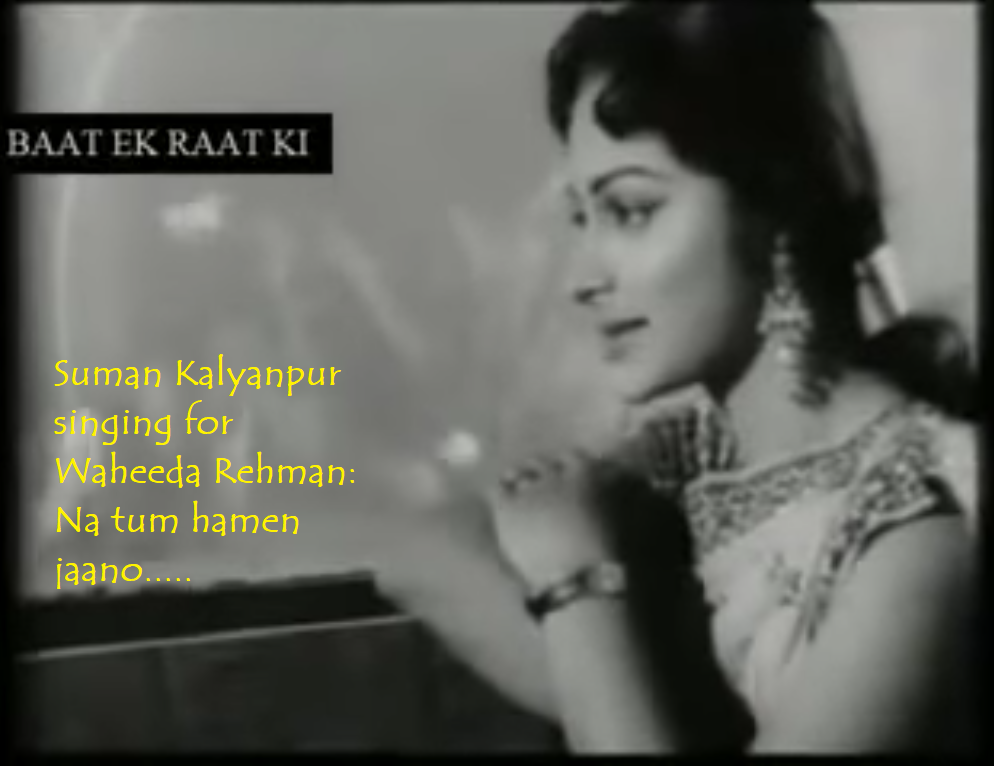
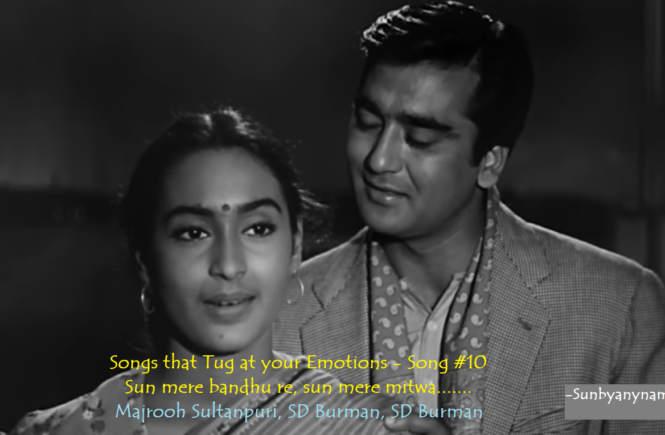
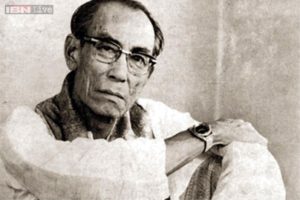 When you recall the life of one of the best and most influential composers in Hindi movies, it amazes you to know that he died on 31 Oct 1975, that is 42 years ago; however, his legacy and popularity continue as if it was yesterday. In addition to his delightful compositions that were both raaga based and semi-classical, he had a powerful singing voice that transported one to the atmosphere of the song as driftwood in strong flow. He didn’y allow his voice to be lent as playback singer for actors. Hence, his singing voice was often used as a background commentary. Here in this song, Bimal Roy has used his voice to convey the feelings of the actress Nutan in the title role of Sujata through background singing (lip-syncing) by a boatman in the river Hoogly.
When you recall the life of one of the best and most influential composers in Hindi movies, it amazes you to know that he died on 31 Oct 1975, that is 42 years ago; however, his legacy and popularity continue as if it was yesterday. In addition to his delightful compositions that were both raaga based and semi-classical, he had a powerful singing voice that transported one to the atmosphere of the song as driftwood in strong flow. He didn’y allow his voice to be lent as playback singer for actors. Hence, his singing voice was often used as a background commentary. Here in this song, Bimal Roy has used his voice to convey the feelings of the actress Nutan in the title role of Sujata through background singing (lip-syncing) by a boatman in the river Hoogly.
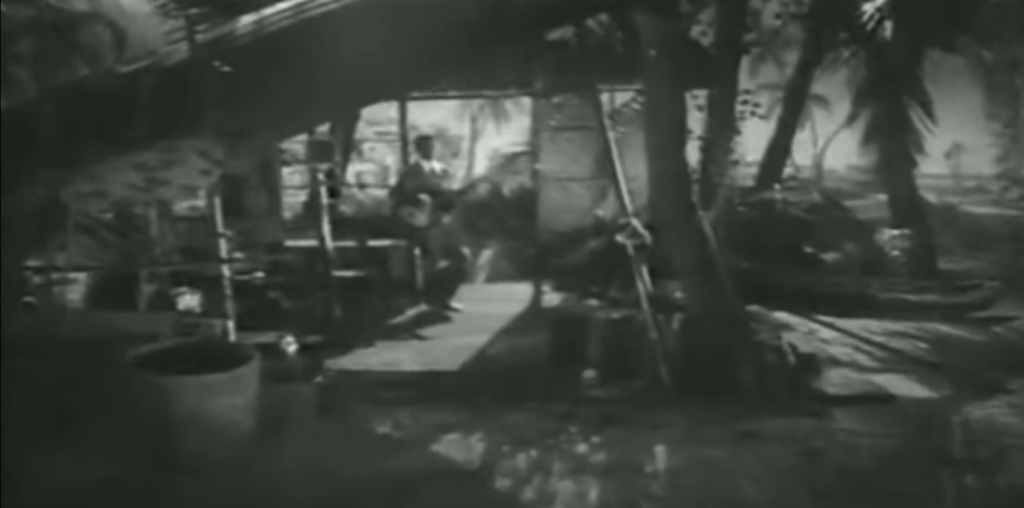
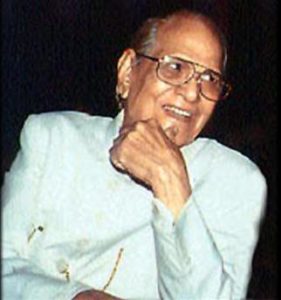 After 1957, he had another great pairing with
After 1957, he had another great pairing with 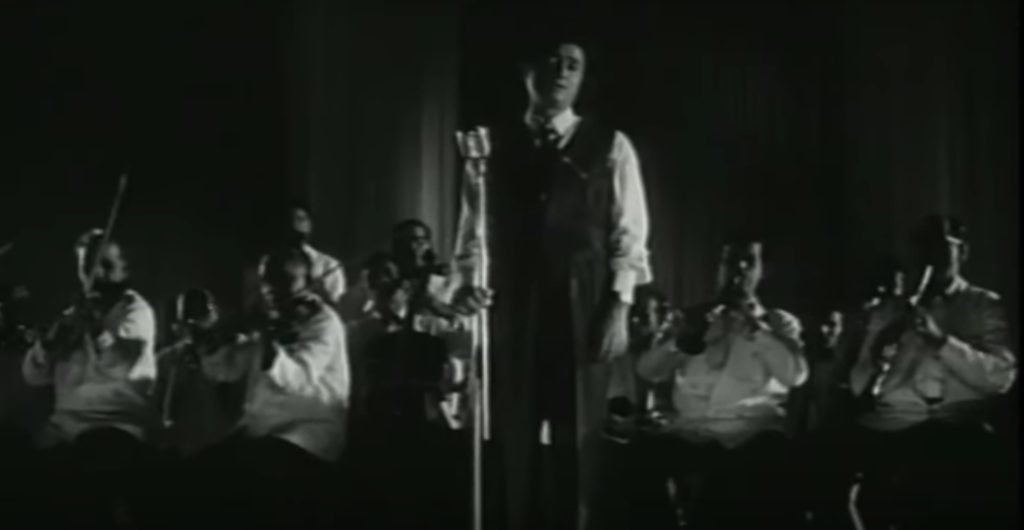
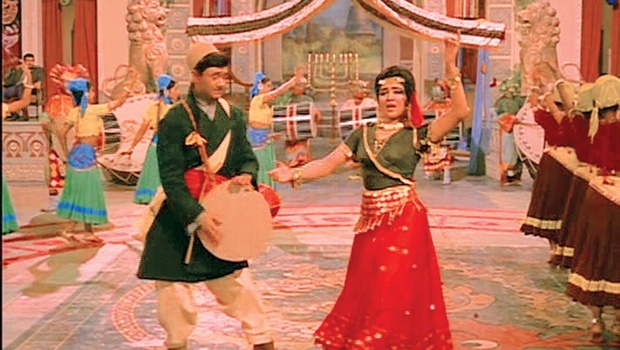
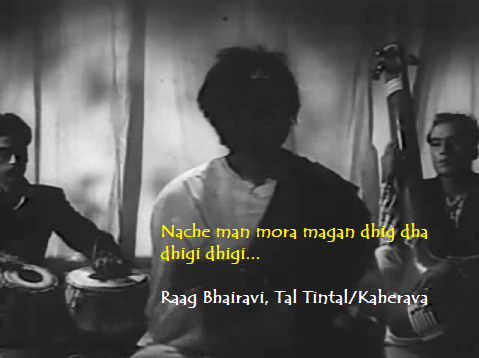
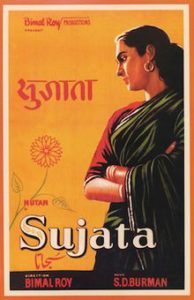
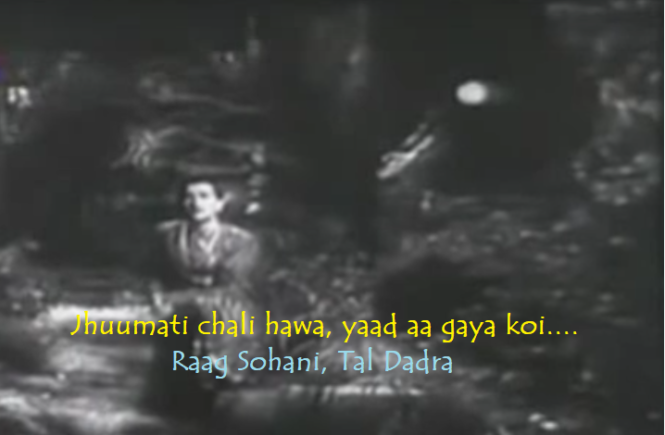
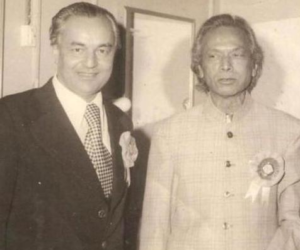
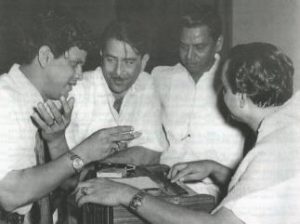
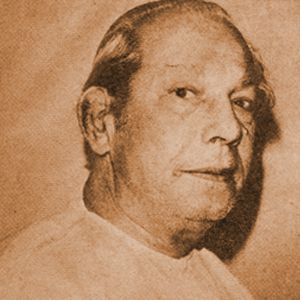
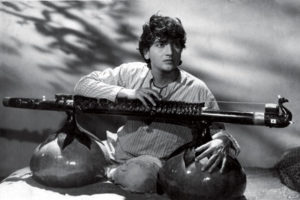
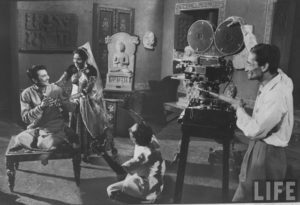
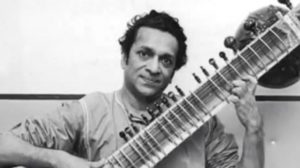 Before we actually take up the song, first, lets take up the
Before we actually take up the song, first, lets take up the